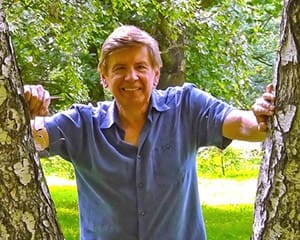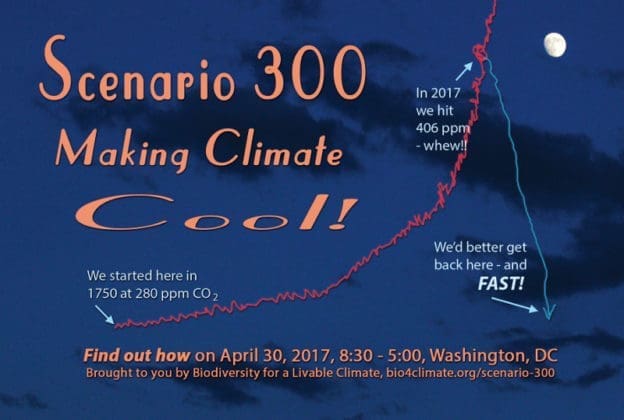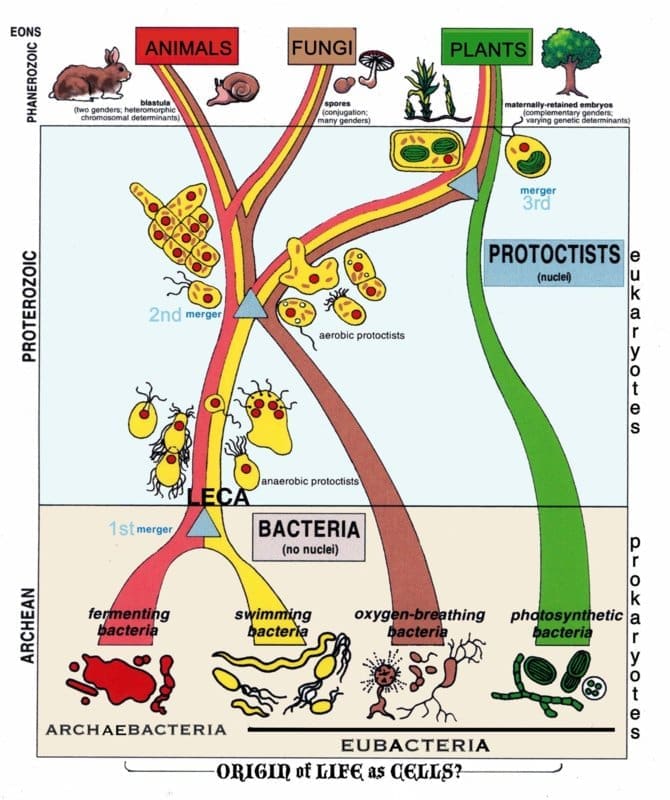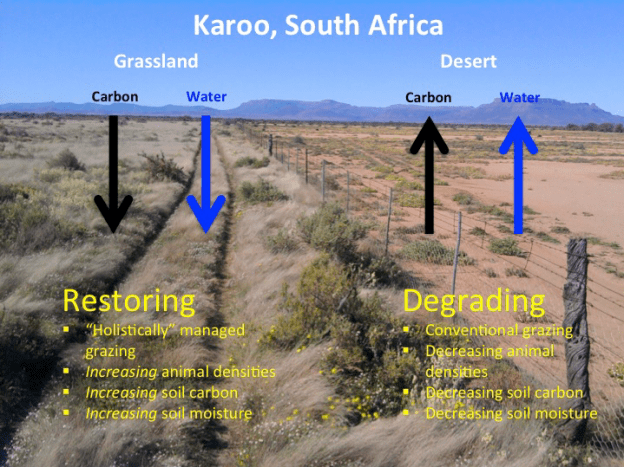We are last minute arrivals to the region of the Earth where life can be found and thrives: the biosphere. The 3.8 billion year history of the Earth shows to this day that life — particularly microbial — has been the consistent major contributor to building features of the biosphere, giving us rocky landscapes, myriad ecosystems, healthy soils, oxygenated air, and the cyclic flow of key elements.
Ecologists Doug Zook and David Morimoto examine how the biosphere is the story of connections and reciprocating systems over extraordinary long distances. Doug shares examples from the science known as “global ecology” and David will moderate the discussion.
This talk is part of our Life Saves the Planet Speaker Series in partnership with GBH Forum Network. Learn more about this series here: https://www.wgbh.org/forum-network/partners/biodiversity-for-a-livable-climate
Learn more about Biodiversity for a Livable Climate: https://bio4climate.org/
Connect with us
Facebook: https://www.facebook.com/bio4climate
Twitter: https://twitter.com/bio4climate
Instagram: https://www.instagram.com/bio4climate/
#biology #ecology #history
Tag: ERAearth
Some Sample “Wows” From Biosphere History
Douglas Zook, in conversation with David Morimoto, joined our Life Saves the Planet lecture series hosted by GBH Forum Network. Dr. Zook is an ecologist with a long career making the connections between activity at the microbiome scale and global ecology. He led us through some major moments in biosphere history and described what we can learn from our ecological past to meet our present challenges.
Counting Down to Restoring Earth: How Do We Get There?
Ecosystem Restoration Camps, in partnership with Biodiversity for a Livable Climate, hosted a symposium on the steps we need to take to restore the earth over the next several years. The event featured speakers Daniel Wahl, John D. Liu, Precious Phiri, and Jim Laurie with opening remarks from Tim Christophersen from the UN Environment Program. Watch the Video.
Christopher Haines: Heat Planet
Learn more about Biodiversity for a Livable Climate: https://bio4climate.org/
Please donate to our ecosystem restoration work: https://bio4climate.org/donate/
Not just fossil fuels, but also the human-generated heat that creates global warming.
Christopher Haines: architect, consultant for living design
#globalwarming #climatechange #planet
Walter Jehne: Climate Solutions for a Blue Planet
Walter Jehne, founder of Healthy Soil Australia and internationally acclaimed soil and climate scientist, describes solutions we can all partake in to restore Earth’s ecosystems and address climate change.
Learn more about Biodiversity for a Livable Climate: https://bio4climate.org/
Connect with us
Facebook: https://www.facebook.com/bio4climate
Twitter: https://twitter.com/bio4climate
Instagram: https://www.instagram.com/bio4climate/
#regeneration #aridlandscapes #planetrestoration
Our Crowdfunder, Saving Life on Earth Is Our Highest Calling!, in Collaboration with Spirit of Resilience
A collaborative crowdfunder highlighting the relationship between spirit and science, with Spirit of Resilience, an organization of women of color. View details.
Heat Planet- Another View of Climate with Christopher Haines
Architect Christopher Haines will give an overview of our built environments and degraded rural habitats, and how they make significant contributions to global warming. He illustrates how a change in perspective may lead to a cooler planet much faster than we thought, inexpensively, while restoring a greener, biodiverse Earth.
Christopher Haines: Living Building Challenge and Passive House consultant
Learn more about Biodiversity for a Livable Climate: https://bio4climate.org/
Connect with us
Facebook: https://www.facebook.com/bio4climate
Twitter: https://twitter.com/bio4climate
Instagram: https://www.instagram.com/bio4climate/
Presented at Blessed Unrest conference via online, extending across weekends in April & May of 2020
#climate #planet #globalwarming
Cooling the Climate Mess with Walter Jehne
Soil and climate scientist Walter Jehne explains how healthy soils act as a sponge for carbon and water – the “soil carbon sponge.” When we manage soils to absorb water, biodiverse living systems thrive, photosynthesis pulls carbon out of the atmosphere, the biosphere cools, and regenerates a viable life-support system for millions of species including humans.
Learn more about Biodiversity for a Livable Climate: https://bio4climate.org/
Connect with us
Facebook: https://www.facebook.com/bio4climate
Twitter: https://twitter.com/bio4climate
Instagram: https://www.instagram.com/bio4climate/
#cooling #climatecrisis #solutionstoclimatechange
The Heat Planet: A New Approach to Climate with Christopher Haines
June 13, 2019, 6:00 p.m., Potluck, Presentation and Discussion in Cambridge: “The Heat Planet: A New Approach to Climate with Christopher Haines.” View event details.
Natural climate solutions, Griscom 2017
This is one of the most comprehensive mainstream studies to date of a broad spectrum of natural climate solutions by thirty-two co-authors and supported by The Nature Conservancy. The report examines “20 conservation, restoration, and/or improved land management actions that increase carbon storage and/or avoid greenhouse gas emissions across global forests, wetlands, grasslands, and agricultural lands.” The authors “find that the maximum potential of NCS [Natural Climate Solutions] —when constrained by food security, fiber security, and biodiversity conservation—is 23.8 petagrams[11] of CO2 equivalent . . . This is ≥30% higher than prior estimates, which did not include the full range of options and safeguards considered here.” [Griscom 2017: 11645]. The study seeks to assess both the potential emissions from land use as well as the carbon-sequestration potential.
The study posits a target of <2o C as the conventionally agreed-upon safe limit:
Warming will likely be held to below 2 °C if natural pathways are implemented at cost-effective levels . . . and if we avoid increases in fossil fuel emissions for 10 y and then drive them down to 7% of current levels by 2050 and then to zero by 2095 [p. 11647]
The authors state that their estimates are intentionally conservative because (1) they do not include potential benefits of payments for high-money-value ecosystem services in stimulating NCS efforts; (2) they exclude various management practices where data were not “sufficiently robust for global extrapolation,” e.g., no-till, adaptive multi-paddock grazing, etc.; and (3) significant additional investment would be required to keep warming at 1.5o C. [Griscom 2017: 11648]
Detail is provided on contributions of specific mitigation pathways, such as forests, wetlands, grasslands, etc., and on challenges as well. For example, “Despite the large potential of NCS, land-based sequestration efforts receive only about 2.5% of climate mitigation dollars.” [Griscom 2017: 11648] This observation is consistent with our observations of limited available resources for the most basic NCS education. Other challenges include deforestation for farming and animal husbandry, losing high carbon sequestration benefits of wetlands due to reclamation, and impacts of climate feedbacks such as fire, drought, temperature increases, etc.
We applaud Griscom et al. for an excellent and comprehensive analysis and review of many of the factors in natural climate solutions. We do, however, believe that (1) the potential of nature’s solutions is far greater than Griscom et al. estimate, and (2) that the temperature limits (1.5o – 2o C) are too high and too dangerous – considering that natural processes are already changing, drastically and for the worse, with an average global temperature increase of barely 1o C (see Appendix A: Urgency of the Biodiversity and Climate Crisis).
The differences between the perspectives of Griscom et al. and those adopted in this Compendium are paradigmatic. Griscom et al. acknowledges that their estimates are conservative, looks at a set of studies that tends toward the mainstream and is primarily based on established and widespread practice. This is perfectly reasonable in the process of what Thomas Kuhn calls “normal science” (see Compendium Vol. 1 No. 1 for an extensive discussion of Kuhn’s landmark work). Unfortunately the process of normal science for accepting new thinking and discoveries usually takes decades, and we are currently in the throes of an extinction, and an emergency with respect to biodiversity, and climate change. Therefore we have to accelerate our response. Accordingly, Bio4Climate searches for studies that tend to examine positive variants, i.e., examples of what is possible beyond current conceptual boundaries. We emphasize goals to strive for, even if the data are not yet “sufficiently robust for global extrapolation.” The robustness of such data will increase with more intentional focus.
An interesting side effect of the paradigm difference is that numerous sources that we cite, many from the scientific literature, don’t appear in NCS references (for example, Richard Teague [Teague et al. 2016], Gabe Brown [Brown 2016], Tom Goreau [Goreau 2015], Rebecca Ryals and Whendee Silver [Ryals and Silver 2013], David Johnson [Johnson 2017], Paul and Elizabeth Kaiser [Kaiser 2017], Terry McCosker [McCosker 2000], Carol Evans and Jon Griggs [Evans et al., 2015], to name just a few). Nor are there discussions of permaculture or agroforestry, two of the more promising areas of research and practice in land management that lead to climate-positive results.
Unfortunately the process of normal science for accepting new thinking and discoveries usually takes decades, and we are currently in the throes of an extinction, and an emergency with respect to biodiversity, and climate change. Therefore we have to accelerate our response. Accordingly, Bio4Climate searches for studies that tend to examine positive variants, i.e., examples of what is possible beyond current conceptual boundaries. We emphasize goals to strive for, even if the data are not yet “sufficiently robust for global extrapolation.” The robustness of such data increases with intentional focus. |
Compendium Vol. 1 No. 2: Appendix B: A systems approach to climate change
“The world is divided politically, but ecologically it is tightly interwoven.” – Carl Sagan, 1980, Cosmos
The magnitude of troubles ailing humanity is dizzying, if not terrifying – any 10 minutes of exposure to the daily news can attest to this. It’s hard to untangle the problems from each other, or to connect causes to effects, let alone to identify solutions that will work. That may well be because we tend to focus on symptoms rather than root causes. Wealth inequality, climate change and perpetual war are not inevitable conditions, but they are natural outcomes of the systems that produce them. With this in mind, here we explore solutions to the climate crisis from a systems perspective, meaning we seek to understand what complex systems are, how they work, and then to place what we observe of the world into this context.
Complex systems exist and behave the way they do based on the relationships among their component parts, as well as their interactions with other overlapping systems and subsystems. The Earth system is made up of a few major sub-systems: atmosphere, biosphere, hydrosphere, lithosphere, and human socio-economic systems [Donner 2009], within which countless other systems operate and interact. Elements, like carbon, cycle through systems as inputs and outputs, connecting systems to each other, and also collecting in various stocks, depending on rates of input and output.
Ecosystems, and indeed the global biosphere, are prototypical examples of complex adaptive systems, in which macroscopic system properties such as trophic structure, diversity–productivity relationships, and patterns of nutrient flux emerge from interactions among components, and may feed back to influence the subsequent development of those interactions [Levin 1998:431].
In other words, every system is greater than the sum of its parts. This is due to the relationships among parts giving rise to distinct patterns of behavior expressed by the system itself, often referred to as emergent properties, which in turn affect component parts. The human body is an example of a complex system, where all the organs working together give life to a person, and the behavior or the person affects the health of her organs. At the same time, individuals influence larger complex systems of which we are a part, such as our labor and spending in an economy; we are in turn influenced by economic volatility.
To understand global warming in the context of the Earth system, then, is to focus on how many components of the system interact to produce this outcome. It is to understand not only that greenhouse gas emissions trap heat in the atmosphere, but also that vegetation cools the Earth through evapotranspiration thereby generating rainfall that would otherwise be absent, while also drawing carbon out of the atmosphere. It is to further understand that vegetation is better protected and more productive in the presence of a greater degree of biodiversity. It is to accept and appreciate the vast complexity of billions of simultaneous processes that cannot be fully controlled, and yet also to recognize the larger patterns that restore balance to the systems sustaining all life. And it is to more fully account for how human systems interact with the other Earth systems.
As many studies in this Compendium show, Earth abounds with connections and causes that may surprise us. For instance, groundwater depletion is a source of CO2 emissions [Wood 2017], mushrooms cause rain [Hassett 2015], termite mounds mitigate drought effects [Bonachela 2017], and the Earth’s vast biosphere evolved into being thanks to a fungi-plant partnership [Mills 2017]. Understanding the planet as a complex system, encompassing myriad living and non-living subsystems, opens up our awareness to the interdependence among seemingly unrelated things and processes, and to the possibility of indirect effects and unintended consequences.
A systems framework also helps us understand the urgency of the crisis, given dynamics of complex systems that can lead to abrupt, transformational changes in the system. For instance, there are often time and space lags between cause and effect, as well as indirect effects, obscuring our awareness of the causes and consequences of our actions. Each time we drive a car, for example, we contribute to air pollution, acid rain, and climate change, however slightly. Yet, in the moment of driving, we are spared any immediately perceptible evidence of these effects. “With respect to climate change, greenhouse gases have accumulated in piecemeal fashion, with each car, cow, power plant, etc., having a minor effect. However, combining these small-scale impacts, through space and time, has manifested in large-scale effects that affect the entire planet” [Ingwersen 2013:4]
In addition, complex systems are influenced by positive or negative feedback loops, which either amplify a change or control it, respectively. Due at least in part to positive feedback mechanisms, complex systems exhibit nonlinear responses, meaning “that a very small change in some parameters can cause great qualitative differences in the resulting behavior”, as opposed to “the response of a linear system to small changes in its parameters or to changes in external forcing,” which “is usually smooth and proportionate to the stimulation” [Rial 2004:12].
Nonlinear behavior is triggered when the trajectory of a gradual change crosses a “tipping point,” or threshold, beyond which the system no longer maintains its equilibrium, and it changes abruptly into a new state. It’s akin to the age-old expression, “the straw that broke the camel’s back” – in other words, though increasingly strained the camel bore the weight of more and more straw, but only up to a point. An example of nonlinear change is the Arctic Sea, which hasn’t been ice free for more than 100,000 years but is now declining by 13.2% per decade [NASA] and could lose its summer ice entirely within a matter of years.
Understanding the climate crisis as a symptom of the global destruction of multiple interacting earth systems, rather than simply as the result of a buildup of greenhouse gases, leads us to different solutions. As Rockstrom et al [2009] suggest, in the interest of preserving the stable Holocene climate system we have known since before the dawn of agriculture, humanity’s response to climate change must account for multiple Earth system thresholds that are not to be crossed. “Since the industrial revolution (the advent of the Anthropocene), humans are effectively pushing the planet outside the Holocene range of variability for many key Earth System processes [Steffen et al. 2004].
Without such pressures, the Holocene state may be maintained for thousands of years into the future” [Rockstrom 2009:2]. The authors identify several other Earth system processes, including: ocean acidification, ozone depletion, aerosol loading, biodiversity loss, land-use change, nutrient and chemical pollution, and freshwater use, where “transgressing one or more planetary boundaries may be deleterious or even catastrophic due to the risk of crossing thresholds that will trigger non-linear, abrupt environmental change within continental- to planetary-scale systems” [Rockstrom 2009:1].
In other words, it’s not enough to solve the climate crisis only by switching to 100% renewable energy if the many other processes leading to ecological collapse are left unchecked. The explanation Rockstrom et al. offer sensitizes us to the strong interdependence among earth systems and processes, showing, for instance, that global warming can interact with (exacerbate or be exacerbated by) biodiversity loss, and with the human systems. How we respond to climate change can exert a positive (amplifying) feedback, for example, by ramping up our energy-intensive industrial defenses (artificial seawalls, air conditioners, geoengineering), or a negative (controlling) feedback – restoring coastal wetlands to mitigate hurricane damage, and increasing urban tree canopy to cool cities.
Donella Meadows, a systems thinker and sustainability advocate, offers an approach to intervening in these complex and overlapping systems to influence outcomes. She notes that we often look for leverage points in the wrong places, such as in the parameters. Parameters are what control the rate of flux into or out of a system, such as CO2 into or out of the atmosphere, and are often controlled through policy changes, such as changes in tax rates, minimum wage, and air quality standards, for instance [Meadows 1999]. Yet “if the system is chronically stagnant, parameter changes rarely kick-start it” [Meadows 1999: 8] because they are usually too small to trigger change in the overall goals or design of the system.
Meadows explains that a more powerful leverage point is the system’s guiding paradigm, such as that of our socio-economic systems that infinite growth will necessarily improve the human condition. Perhaps what’s needed is to reveal the current paradigm’s blind spot: that the planet’s resources, which fuel economic growth and absorb its waste products, are finite. Or a guiding paradigm of our political systems that downplays the role of biodiversity and ecosystem restoration/conservation by relying on emissions reductions to solve the climate crisis.
Paradigm change for an individual can happen in an instant, Meadows explains; for a whole society, it’s more complicated, though still possible. “In a nutshell, you keep pointing at the anomalies and failures in the old paradigm, you keep coming yourself, and loudly and with assurance from the new one, you insert people with the new paradigm in places of public visibility and power. You don’t waste time with reactionaries; rather you work with active change agents and with the vast middle ground of people who are open-minded” [Meadows 1999:18].
In our daily lives, we are well sensitized to the processes of our socio-economic systems – working for a paycheck, taking care of our families, and tending to our social networks. This is normal – it’s called living one’s life. We are much less sensitized to how our human systems interact with Earth systems, because any one person doesn’t necessarily need to consider this link to ensure his/her near-term survival or wellbeing. An exception may be farmers, whose wellbeing does depend on the land, and who are thus more likely to be in tune with Earth systems in a local context.
In general, though, we (at least in the West) rely directly on cars, buses, pavement, electricity, refrigerators, grocery stores, and plastic packaging, and only indirectly on the ecosystem processes that make these technologies possible. This is a glaring blind spot in one of our guiding paradigms – that our technology can save us. It’s a failure to visualize the world as a complex system with all its components and subsystems open and interacting, and to clearly perceive how the ingrained patterns of our daily lives, manifesting from the design of our socio-economic systems, are driving the cycles of Earth’s systems beyond the limits of equilibrium.
This is a glaring blind spot in one of our guiding paradigms – that our technology can save us. It’s a failure to visualize the world as a complex system with all its components and subsystems open and interacting, and to clearly perceive how the ingrained patterns of our daily lives, manifesting from the design of our socio-economic systems, are driving the cycles of Earth’s systems beyond the limits of equilibrium. |
In short, the climate crisis we face isn’t just about greenhouse gases, biodiversity loss, poor soil health, or depleted aquifers, nor is it only about the food system, industrial society, poor individual choices, the military industrial complex, or unaccountable corporations, or any of a long list of ills. It’s about all of them in constant interactions, and our solutions need to account for that.
Healing the Earth in 18 months: The Wholing of Ecosystems and Human Will with Bill Reed
Bill Reed is an internationally recognized practitioner, lecturer, and leading authority in sustainability and regenerative planning, design and implementation.
Learn more about Biodiversity for a Livable Climate: https://bio4climate.org/
Connect with us
Facebook: https://www.facebook.com/bio4climate
Twitter: https://twitter.com/bio4climate
Instagram: https://www.instagram.com/bio4climate/
Presented at the Climate Reckoning conference November 17-19, 2017 at Harvard University
#ecosystems #holistic #earth
Climate Reckoning: Paths to an Earth Restored
Conference Home Speakers Program Sponsors and Partners
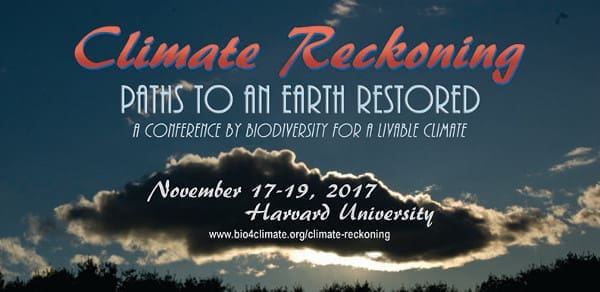
Our most exciting, ground-breaking
conference yet was a great success!
Videos now online on the program page.
Harvard University,* Museum of Natural History
Geological Lecture Hall
24 Oxford Street, Cambridge, MA
Friday, November 17 – Sunday, November 19, 2017
Friday, 6 p.m. – 9 p.m., Saturday and Sunday, 9 a.m. – 5 p.m.
This conference addresses the Earth System, and the universe of solutions
that systems thinking makes possible.
With recent unprecedented wildfires, heat waves, super storms, droughts and floods, the climate is sending us messages that are impossible to ignore. It is increasingly clear: disasters like hurricanes Harvey and Irma are but dire warnings of what’s to come.
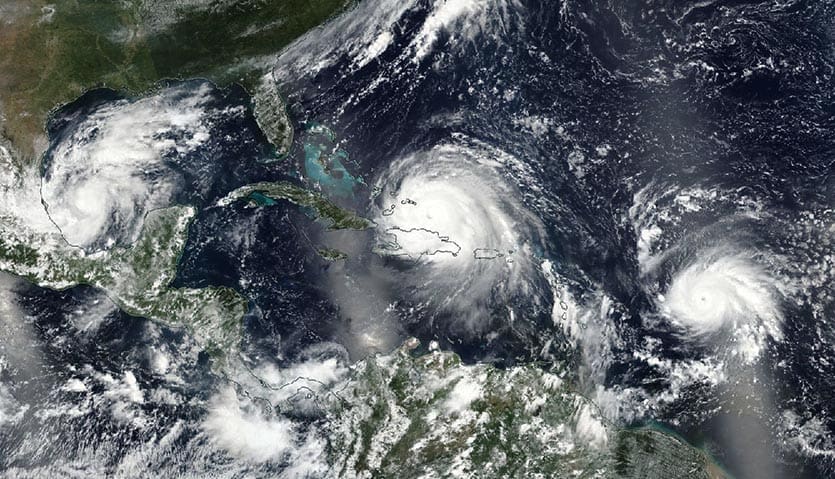
Photo: NASA
The scientific community now recognizes that even if we go to zero emissions tomorrow, the tragedies will continue to mount. If we think that our only option is emissions reductions, as essential as they are, we hit a wall with nowhere to go but resignation and despair. But when we add eco-restoration into the equation, a remarkable story emerges, one of renewal and hope.
Biodiversity for a Livable Climate is telling that story. When we began hosting conferences in 2014, the phrase “reverse global warming” was hardly spoken – it was presumed impossible in conventional climate science and activism. A fundamental cure, repair of Earth’s life-support systems, was off the table. Today, in collaboration with many wonderful people and organizations around the world, that story is rapidly changing. Eco-restoration is growing into a powerful global movement, a movement that needs us all.
In our previous nine conferences we helped usher in a new climate conversation, transforming gloom and doom into inspiration and action. Speakers from five continents have shown us how to bring dead landscapes back to life by restoring soil, native plant and animal species, and local water, carbon and nutrient cycles. Resulting living landscapes pull down excess carbon from the atmosphere, rehydrate the land, cool the biosphere, and produce nutritious food for humans and animals.
In this conference, Climate Reckoning: Paths to an Earth Restored, we’ll connect many dots linking biological systems, human endeavor and climate to expand this new and compelling story.
* * * * * *
For $8 parking at the nearby 52 Oxford Street garage,
register on the visitor parking page.
When you get to the Harvard University Daily Visitor Parking Page, Select select Visitor on the lower right, then Log In or Register as a new visitor. In the Department field, select Visitor to Campus, and in the Department Code field enter code 7700. When you purchase the permit, Affiliation is Event Participant and the Event Name is Climate Reckoning. Select the garage at 52 Oxford Street. If you have any questions, please call the Campus Service Center, 617-495-3772 (they’re friendly and helpful).
NOTE: On-street parking is free (not metered) in Cambridge on Sundays.
The Advancement of Science: From Paradigms to Peer Review
Paradigms and How They Shift
Understanding the role of paradigms in scientific investigation is one of the keys to approaching the revolutionary view of climate as a problem of ecosystem dynamics as opposed to one simply of excessive greenhouse gases. The new paradigm doesn’t render the old paradigm irrelevant, but it reframes its significance and role in addressing the current climate crisis. It exposes to open examination what was heretofore an invisible phenomenon, and avails a universe of solutions to what is, from the perspective of the greenhouse gas hypothesis, an intractable and quite possibly utterly hopeless problem. Therefore, we will take a moment to review the paradigm process and apply it to our contending climate paradigms.
In 1962, Thomas Kuhn, a Harvard-trained physicist who became a historian and philosopher of science, published a controversial book, The Structure of Scientific Revolutions. Prior to Kuhn, the prevailing assumptions about the way science progressed were that knowledge was gradually accumulated by generations of investigators, with occasional quantum leaps by great scientists, but in an overall smooth and continuous albeit occasionally heroic process.
Kuhn broke new ground by re-examining and reframing the process of scientific investigation.
He brought the term “paradigm” into common usage, by which he meant a body of “universally recognized scientific achievements that for a time provide model problems and solutions to a community of practitioners” (p. viii, emphasis added). We will review Kuhn’s work briefly and apply his analysis when comparing the mainstream greenhouse gas climate paradigm and the newly evolving eco-restoration climate paradigm.
Kuhn maintained that scientific progress is episodic, characterized by long periods of “normal science,” which takes place in the context of a paradigm:
At least in the mature sciences, answers (or full substitutes for answers) to [many] questions . . . are firmly embedded in the educational initiation that prepares and licenses the student for professional practice. Because that education is both rigorous and rigid, these answers come to exert a deep hold on the scientific mind. [Kuhn 1962:5]
Normal science, the activity in which most scientists inevitably spend almost all their time, is predicated on the assumption that the scientific community knows what the world is like. Much of the success of the enterprise derives from the community’s willingness to defend that assumption, if necessary at considerable cost. Normal science, for example, often suppresses fundamental novelties because they are necessarily subversive of its basic commitments. Nevertheless, so long as those commitments retain an element of the arbitrary, the very nature of normal research ensures that novelty shall not be suppressed for very long. [Kuhn 1962:5]
Normal science is punctuated by the appearance of anomalies which cannot be explained by the paradigm’s generally accepted theories, nor tested by what the paradigm might consider reasonable hypotheses, nor resolved with current testing protocols or equipment.
When examining normal science . . . we shall want finally to describe that research as a strenuous and devoted attempt to force nature into the conceptual boxes supplied by professional education. [Kuhn 1962:5]
[W]hen [normal science repeatedly goes astray] – when, that is, the profession can no longer evade anomalies that subvert the existing tradition of scientific practice – then begin the extraordinary investigations that lead the profession at last to a new set of commitments, a new basis for the practice of science. The extraordinary episodes in which that shift of professional commitments occurs are the ones known in this essay as scientific revolutions. They are the tradition-shattering complements to the tradition-bound activity of normal science. [Kuhn 1962: 6]
and
Normal science consists in . . . an actualization achieved by extending the knowledge of those facts that the paradigm displays as particularly revealing, by increasing the extent of the match between those facts and the paradigm’s predictions, and by further articulation of the paradigm itself.
Few people who are not actually practitioners of a mature science realize how much mop-up work of this sort a paradigm leaves to be done or quite how fascinating such work can prove in the execution. And these points need to be understood. Mopping-up operations are what engage most scientists throughout their careers. They constitute what I am here calling normal science. Closely examined, whether historically or in the contemporary laboratory, that enterprise seems an attempt to force nature into the preformed and relatively inflexible box that the paradigm supplies. No part of the aim of normal science is to call forth new sorts of phenomena; indeed those that will not fit the box are often not seen at all. Nor do scientists normally aim to invent new theories, and they are often intolerant of those invented by others. Instead, normal-scientific research is directed to the articulation of those phenomena and theories that the paradigm already supplies. [Kuhn 1962:23-24, emphasis added]
and
Paradigms gain their status because they are more successful than their competitors in solving a few problems that the group of practitioners has come to recognize as acute. To be more successful is not, however, to be either completely successful with a single problem or notably successful with any large number. The success of a paradigm . . . is at the start largely a promise of success discoverable in selected and still incomplete examples. [Kuhn 1962:23, emphasis added]
Even today, over half a century after Structures was originally published, normal science seems immune to the possibilities of paradigm shifts – such thoughts often do not occur until forced, even though the process should be reasonably well known if not entirely understood or accepted. The prevailing opinion about paradigm shifts (if there is any opinion at all) appears to be, “It doesn’t apply to my paradigm.”
In general, a paradigm shift doesn’t only involve “objective” factors, it touches scientific practitioners at a deep emotional level as well, as any participant in or observer of academic dispute can testify:
Scientific fact and theory are not categorically separable, except perhaps within a
single tradition of normal-scientific practice. That is why the unexpected discovery is not simply factual in its import and why the scientist’s world is qualitatively transformed as well as quantitatively enriched by fundamental novelties of either fact or theory. [Kuhn 1962:7]
Therefore, the transition to a new paradigm is disruptive and challenging:
The transition from a paradigm in crisis to a new one from which a new tradition of normal science can emerge is far from a cumulative process, one achieved by an articulation or extension of the old paradigm. Rather it is a reconstruction of the field from new fundamentals, a reconstruction that changes some of the field’s most elementary theoretical generalizations as well as many of its paradigm methods and applications. During the transition period there will be a large but never complete overlap between the problems that can be solved by the old and by the new paradigm. But there will also be a decisive difference in the modes of solution. When the transition is complete, the profession will have changed its view of the field, its methods, and its goals [Kuhn 1962:84-85].
The case in point here is the comparison between old and new climate paradigms
|
Paradigm step |
Old paradigm (greenhouse gases) |
New paradigm (Eco-restoration)
|
|
Paradigm fundamentals |
CO2 and equiv are greenhouse gas blankets and elevated levels cause global warming, primarily caused by burning fossil fuels |
Destruction of billions of acres of land interferes with carbon and water cycles, along with oxidation of soils for over 10k years, puts gigatons of carbon into atmosphere |
|
Weaknesses intrinsic to paradigm |
Positive feedbacks underrepresented, overlooked, not calculated or estimated; biology is characterized as passive victim of climate change |
Complex, interdependent systems that are difficult to model and to quantify into policy |
|
Strengths intrinsic to paradigm |
Amenable to modeling; yields numeric targets that can be translated into policy |
Comprehensive of all likely drivers and their theoretical interdependencies. Plausible upon examination of biogeologic history. |
|
Primary investigators |
Physical scientists almost exclusively from academia |
Restoration ecologists and others from biological sciences; non-academic land managers |
|
Tools |
Emissions reductions via alternative energy and elimination of carbon emissions sources |
Photosynthesis and regenerative land management |
|
Costs |
High |
Low |
|
Technology requirements |
Extensive |
Minimal |
|
Locus of investigation |
Centralized in academia – universities, scientific journals, formal test sites |
Based first in local land management practice, then investigated by academia, landscape managers, local practitioners – farmers, ranchers, horticulturalists, permaculturists, indigenous cultures, etc. |
|
Weight of evidence |
Formal studies, isolated variables |
Practical results, holistic assessment of land health, biodiversity, water and carbon cycling |
|
Success criteria |
Reduced emissions and atmospheric carbon burdens (target 350 ppm? lower?) |
Increased biodiversity, improved water cycles, land resilience, cooling of local biospheres on a global scale, reduced floods and droughts, decline in atmospheric carbon burdens (target 280 ppm) |
|
Duration of existence of paradigm |
Roughly 200 years |
Roughly 20 years with some roots going back considerably longer |
The Perils of Peer Review
It may well behoove us all, including the scientists among us, to take a careful look at how science works today and how practices may improve. For example, while peer review can be a powerful tool, it is worth keeping in mind that we’re in a world of shifting paradigms where there are libraries full of peer-reviewed papers in scientific landfills, review processes notwithstanding. Peer review may be a useful tool, but it may also be a significant obstacle to scientific progress.
Beyond the routine aging and demise of most scientific papers, however, is the problem of a system that excludes information that conflicts with or is invisible to the dominant paradigm. That is a central issue that we face when introducing an entirely new view of climate – in the normal course of science, taking a generation or two to transition between paradigms is acceptable, even healthy; in the throes of a climate emergency, conventional peer review may be a serious obstacle to progress.
Peer reviewers get to review their peers because they are thinking along similar lines, and are likely – perhaps even required – to reject ideas outside mainstream boundaries of thought. Even the conventional authors of a recent USDA study had a difficult time getting their study published because its results were so unexpected [Ausmus 2014; Follett 2012]. And that doesn’t begin to touch any of the forces in the political and economic realms that impact peer-reviewed science, including what actually gets studied (and funded!) and what does not.
Presence or absence of peer review should therefore not serve as a standard for accepting the validity of any paper or report; only the evidence is the basis for such decisions, whether it is within “acceptable” range or far beyond it. The evidence must stand for itself, and the professionals who are readers should have the opportunity to make up their own minds. Peer review is a standard, but not a gold standard – it is one among many, and practitioners of scientific method have an obligation to evaluate the relevance of standards.
Linkov 2006. Whereas most tools of science have evolved over the past three hundred years, there is one that stubbornly shows its age: the scientific journal. The author “argue[s] that the primary reason that journals have not changed is that they are ‘faith based’: we believe in them, we dare not question them.” [Linkov 2006: 596]
Linkov suggests that the journal hasn’t transformed into a new model of publication because it has never applied the scientific method to itself.
Jefferson recently presented an outstanding review of peer review and could find only 19 studies on peer review that were scientifically sound. We could find only 14 articles examining the editorial board/editorial decision making. Thus, with over 50 million articles and 300 years of the traditional journal approaches, there has been only a handful of studies questioning or testing the journal process itself. We scientists keep using the process without question, but with no data to show that it is effective. There is thus no evidence-based approach to the science of research communications. Recent studies reveal that peer review often misses major methodological problems in articles. No wonder it has not changed or improved, as there are no data questioning the process. Hypothesis testing research and randomized trials could easily and cheaply be initiated to understand the ‘grand challenges’ of research communication, but sadly they have not.
Isn’t it strange that three features that are inherent to research communication have not been looked at scientifically? There are several possible reasons for this. The most likely is that we scientists have almost complete faith in the journal process as right and unassailable. We thus take a ‘faith based’ approach to research communications. Faith is defined as a firm belief in something for which there is no proof. Many of us might view questioning of the journal process as an attack on science itself. Clearly, the scientific journal process is not a part of the scientific method. We are taught early in our training about the importance of learning to write articles (e.g. IMRaD[23]), the power of peer review and a belief in the editorial system. We do not question the process, despite the fact that the essence of science is questioning. Questioning peer review is like questioning the Bible, Quran or Torah. One role of science is to help separate science from dogma, which we should now do with journals, and avoid a faith based approach. New approaches need to be taken – you cannot teach dogma new tricks! [Linkov 2006: 597]
It is the scientific method that is central to science, not the scientific journal. The scientific method should be central to other research communication processes, but it is not and has not been used to continuously improve how we communicate research. Because of this, we are forced into a conundrum—we cannot change the process if the process is based upon faith, not data.
Experiences of various fields, including industry, demonstrate there are other forms of quality control besides peer review that could potentially be utilized in the biomedical journals. These methodologies include 6-sigma, statistical quality control, and web based, consumer driven systems such as that employed by Amazon, eBay, and Slashdot. There are thousands of studies in business and sociology evaluating the decision making process that could be brought to bear to evaluate the decision process at the editorial level, but they have not been used. It would seem very simple to develop randomized trials to determine which system best improves the quality of publication. As Jefferson has pointed out, there are almost no data suggesting that the existing peer review systems work and none to suggest that they are better than any other system. . . .
Based upon the data, we cannot reject the hypothesis that scientific journals are faith based. [Linkov 2006: 598]
Smith 2006. Richard Smith was editor of the British Medical Journal for thirteen years, and writes incisively and wryly about the peer-review process. He states that peer review is “the method by which grants are allocated, papers published, academics promoted, and Nobel prizes won. Yet it is hard to define. It has until recently been unstudied. And its defects are easier to identify than its attributes. Yet it shows no sign of going away.” [Smith 2006: 178]
What is peer review?
[And] who is a peer? Somebody doing exactly the same kind of research (in which case he or she is probably a direct competitor)? Somebody in the same discipline? Somebody who is an expert on methodology? And what is review? Somebody saying “The paper looks all right to me”, which is sadly what peer review sometimes seems to be. Or somebody pouring all over the paper, asking for raw data, repeating analyses, checking all the references, and making detailed suggestions for improvement? Such a review is vanishingly rare. . . .
Robbie Fox, the great 20th century editor of the Lancet, who was no admirer of peer review, wondered whether anybody would notice if he were to swap the piles marked ‘publish’ and ‘reject’. He also joked that the Lancet had a system of throwing a pile of papers down the stairs and publishing those that reached the bottom. When I was editor of the BMJ I was challenged by two of the cleverest researchers in Britain to publish an issue of the journal comprised only of papers that had failed peer review and see if anybody noticed. I wrote back ‘How do you know I haven’t already done it?’
Smith goes on to question what peer review is for and whether it works (not very well, which is no surprise at this point). Its drawbacks are that it’s slow and expensive; it is inconsistent, betraying the myth of being objective and reliable; there is bias, particularly against studies with negative results; it may be abused by reviewers who are competitors; and ideas and text may be plagiarized. Improvements may be made by standardization of the process, blinding reviewers to the identity of authors, feedback to reviewers, training reviewers and other techniques. Nonetheless, the obstacles to shifting a 300-year-old industry are daunting. Smith concludes:
So peer review is a flawed process, full of easily identified defects with little evidence that it works. Nevertheless, it is likely to remain central to science and journals because there is no obvious alternative, and scientists and editors have a continuing belief in peer review. How odd that science should be rooted in belief.
* * * * * * * *
Scenario 300: Making Climate Cool!
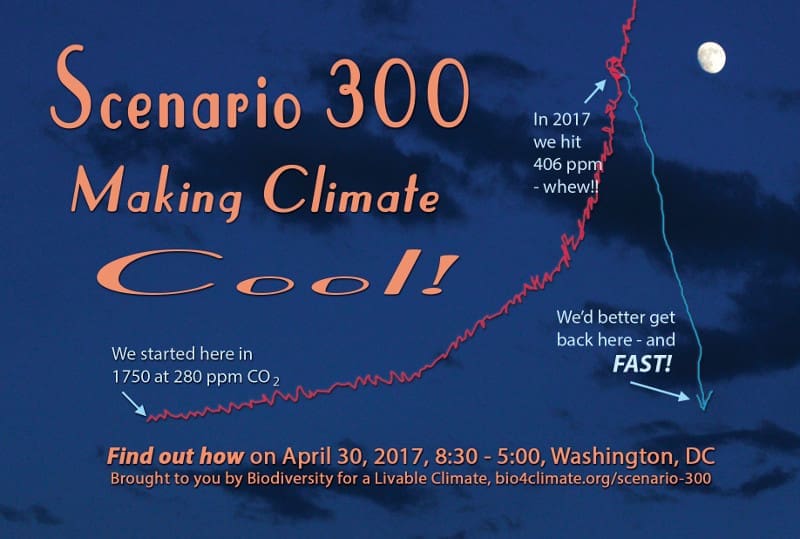
Let’s pull carbon out of the atmosphere and bring down the higher temperatures brought about by global warming – safely, inexpensively, low-tech, with a broad range of benefits.
It was a great conference! Video links are directly beneath the title of each presentation, below.
Downloads: Conference Program, Book List, Take Action!, Carbon Unit Conversions
Scenario 300: Making Climate Cool!
With our deep gratitude for dedicated ongoing support from the very beginning from the
and generous support from our lead conference sponsor, Regeneration International!
Sunday, April 30, 2017
the day after the People’s Climate March
8:30 – 5:00, Washington, DC
At the offices of Steptoe & Johnson LLP
1330 Connecticut Avenue NW
Washington, DC 20036-1795
Nearest Metro: Dupont Circle on the Red Line
Conference website: https://bio4climate.org/scenario-300/
While reducing greenhouse gas pollution from energy production, transportation and unsustainable agriculture practices is critical, Scenario 300 is a strategy for going from a dangerous 406 ppm (parts per million) to a safer 300 ppm of carbon dioxide in our atmosphere. By regenerating healthy ecosystems, including soils, along with managing local water cycles, we can reverse our disastrous climate course. During this inspiring and informative conference, we will discuss how to rapidly move carbon out of the skies and use it to support a diversity of life both above and below ground.
Speakers
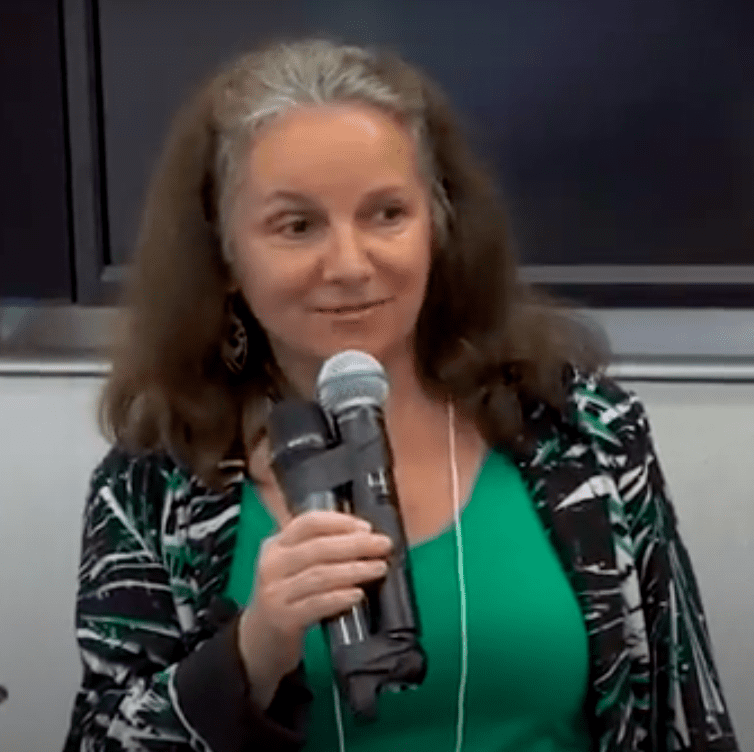
Gina Angiola, MD is a retired physician who has served as an educator and organizer on a wide array of issues ranging from election integrity to environmental sustainability. Most recently, she helped lead the successful campaign for a legislative ban on fracking in Maryland. As a lifelong advocate for healthy environments and a climate activist for over 14 years, she has worked to accelerate the transition to a renewable energy-based economy; she is now committed to promoting ecosystem restoration as the most urgent priority in addressing climate change. She serves as a Board Member of Biodiversity for a Livable Climate and Deputy Director of the DC Chapter, and as a Board member of Chesapeake Physicians for Social Responsibility. She received her Bachelor of Science in Chemistry at MIT and her MD from University of California, Irvine.

Alexis Baden-Mayer, Esq. Political Director, Regeneration International and Organic Consumers Association
Regeneration International, a project of the Organic Consumers Association, is a 501(c)(3) nonprofit dedicated to building a global network of farmers, scientists, businesses, activists, educators, journalists, governments and consumers who will promote and put into practice regenerative agriculture and land-use practices that: provide abundant, nutritious food; revive local economies; rebuild soil fertility and biodiversity; and restore climate stability by returning carbon to the soil, through the natural process of photosynthesis. Through our global network, we are connected to 3.6 million consumers, farmers, activists, scientists and policymakers in over 100 countries. http://regenerationinternational.org
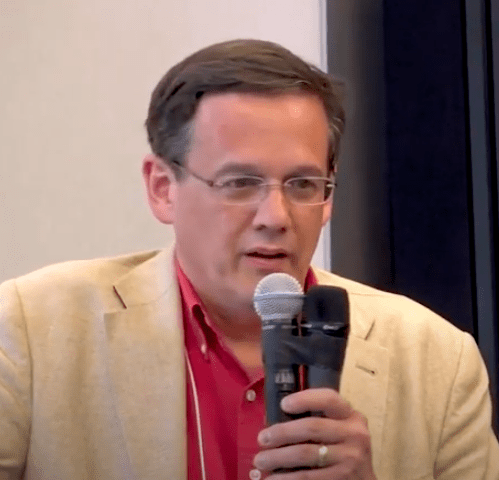
Philip Bogdonoff is an engineer by training and an ecologist by heart. He serves as a Board Member of Biodiversity for a Livable Climate and Director of the Washington DC Chapter. He is a past trustee and board chair of Friends Community School; a co-founder of the Sustainable Washington Alliance; a past vice president of the Millennium Institute; and has been a consultant in the Environment Department of the World Bank; and worked as research assistant in the Section of Ecology and Systematics at Cornell University, helping to model the global carbon cycle. He and Jim Laurie constructed DC’s first “Living Machine” more than 15 years ago. More recently, he facilitated the introduction of Maryland’s Healthy Soils bill (HB1063), which we expect Governor Hogan to sign any day now.
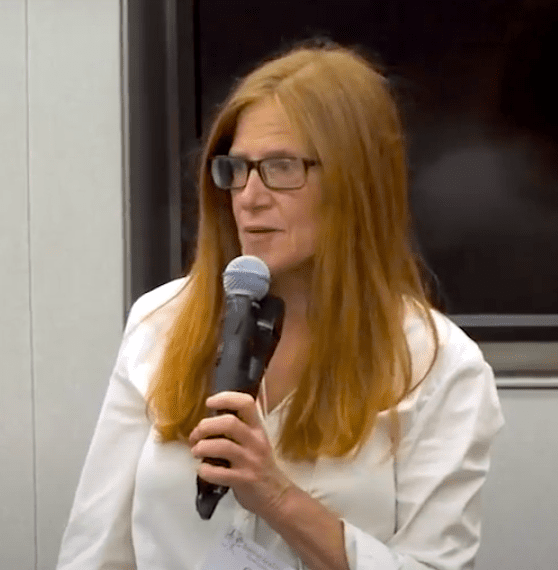
Cleo Braver has the pleasure of living on Cottingham Farm with her husband Allie Tyler, where she and her two full-time employees produce certified organic vegetables and pastured meat and eggs in order to contribute to a year-round natural resource-based economy. She sells to grocers, restaurants and any member of the public who wishes to drive out to the farm on Thursdays-Saturdays.
She enjoyed a previous career as an environmental lawyer for a public company, and she has always advocated for ways in which the law can serve the public interest, particularly with respect to the environment. Most recently, she has been engaged in efforts to create the non-profit Eastern Shore Food Hub to aggregate, market and distribute locally and sustainably produced foods, and engage communities in growing and eating healthy foods and recognizing the direct relationship between their personal food choices, personal and public health, the environment, and the economy.
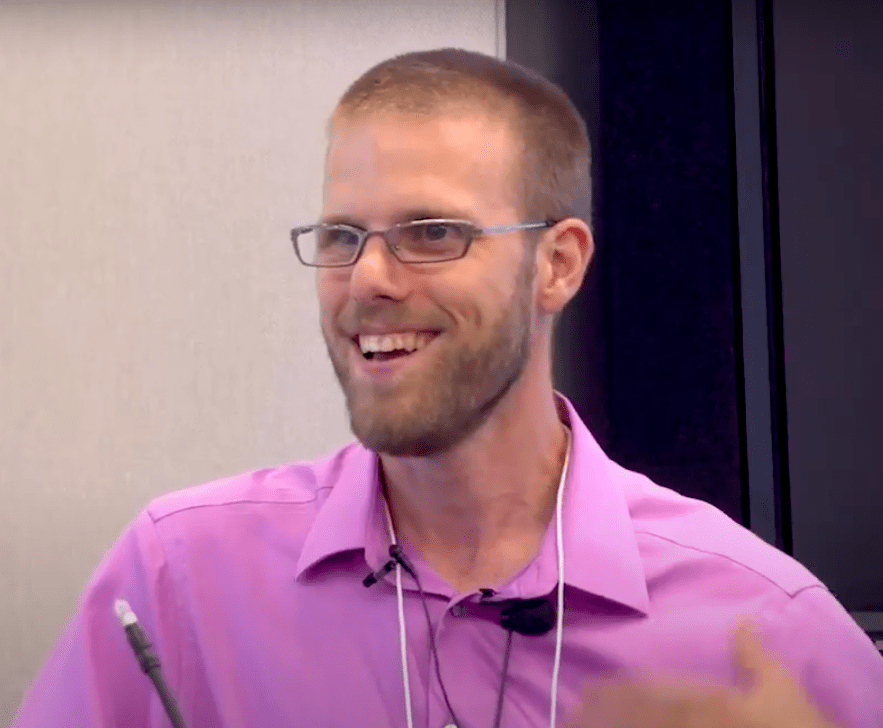
Ben Friton is a soil ecologist, consultant and educator from the Washington DC area. For more than a decade he was a speech professional working with politicians, heads of state, CEOs, and philanthropic icons from around the world. In 2010, with the goal of helping to increase educational awareness and hyper-local food resiliency, he co-founded a non-profit called Can YA Love. Using biomimicry and his patented vertical gardening systems, he works to help people restore degraded lands into functioning ecosystems that produce what people need. In 2014 he joined Forested to help develop the most ecologically-sound agro-ecosystem possible.
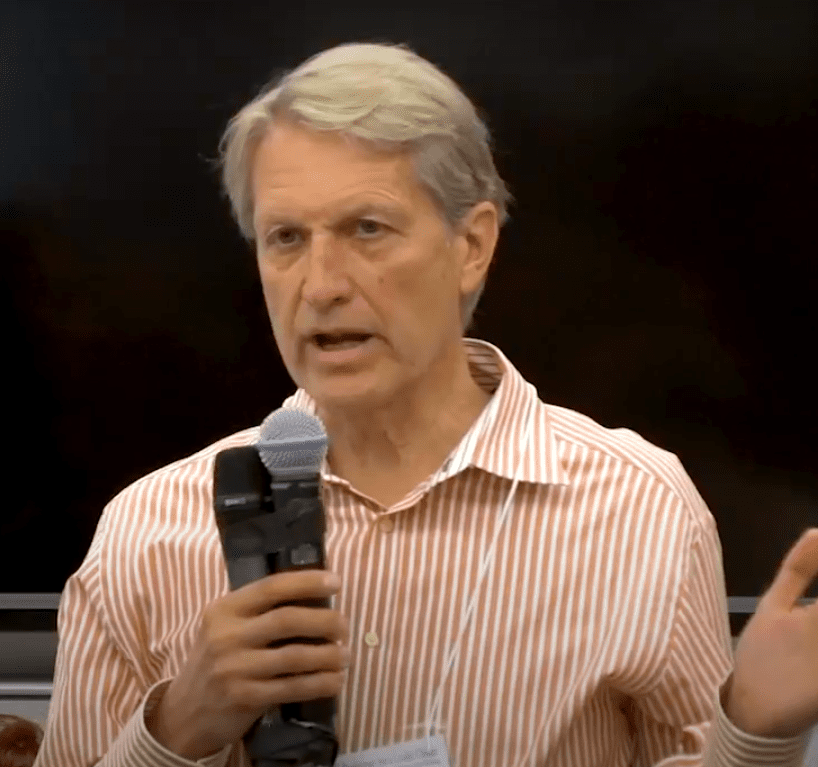
Ed Huling is a nutritionist, researcher, environmentalist and farmer. He led a research project at the USDA about fourteen years ago, and learned about the decline of nutrients in our soil and our food. He founded New Day Farms to practice regenerative agriculture to address this serious issue and provide genuinely nutrient-dense greens to the public. He is also deeply interested in the role of healthy soils in the context of climate and is actively pursuing projects that will help build our knowledge base regarding this important relationship.
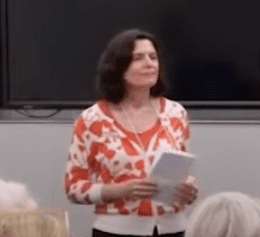
Charlene Johnston, PE, is a professionally licensed Civil Engineer and Program Manager at AECOM. She has more than 20 years of engineering experience. Over the past 15 years, Charlene’s professional focus includes climate resiliency and control of stormwater projects and flood studies. Her passion is green infrastructure (GI) / low impact development (LID) and building resiliency in communities. Charlene was a member of ASCE’s Blue Ribbon Review Panel to review the Water Environment Federation’s Manual of Practice No. 23, Design of Urban Stormwater Controls. She is a member of the DC Chapter of Biodiversity for a Livable Climate, Environmental Water Resources Institute, and the Water Environment Federation.
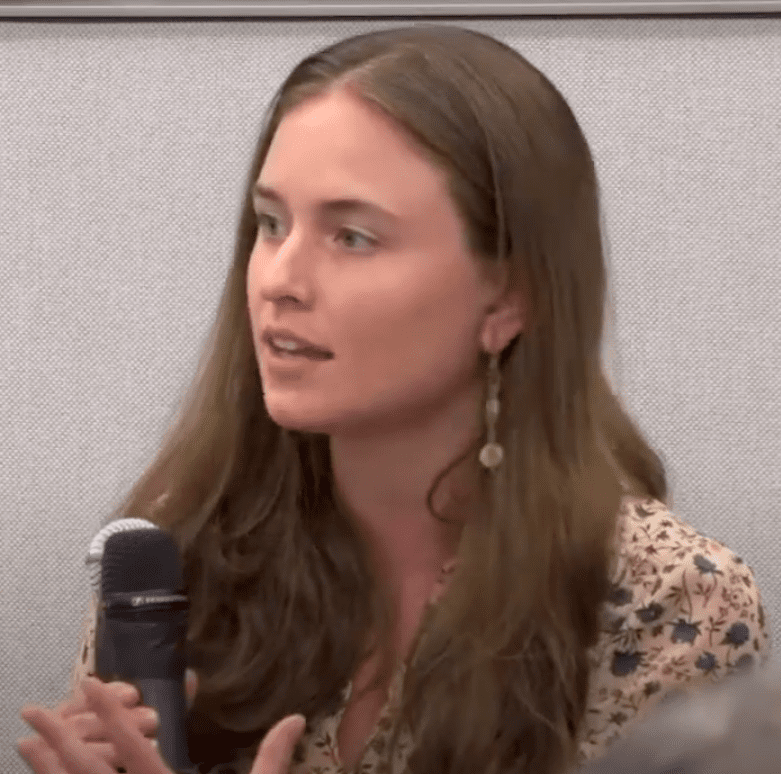
Emily Landis is the Global Coastal Wetlands Strategy Lead at The Nature Conservancy. Her primary focus is on the role coastal wetlands play in sequestering carbon and climate adaptation. Emily comes with a marine background working for the Global Ocean Commission, Pew Charitable Trusts, and Rare. She holds a Master’s Degree in biology from University College London, and holds a Bachelor of Arts degree in environmental science and international policy from American University.
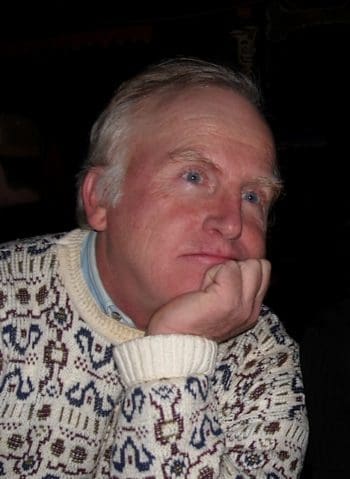
Jim Laurie, Restoration Ecologist, Biodiversity for a Livable Climate, is a biologist from Rice University and is a pioneer in biological remediation of waste water. He was the technical manager of the world’s largest “Living Machine” project to clean raw municipal sewage with no toxic chemicals. The facility, through a grant from the EPA, processed 80,000 gallons/day using the “living machine” methodology invented by ecological visionary, and Buckminster Fuller Award recipient, John Todd.
Prior to that, for twenty years Jim was a biologist and trainer in the chemical industry in Houston, TX, where his work with living machines resulted in processing effluent cleaner than possible with conventional technology. Jim has also been a passionate advocate for Holistic Management of grasslands in the past decade. He began studying with Allan Savory twenty years ago in Texas, has spoken about Holistic Management at Harvard, MIT, Tufts, the Stockholm Environment Institute, and at meetings of the Massachusetts Climate Action Network (MCAN) and Northeast Organic Farmers Association (NOFA), and has been instrumental in spreading the message in New England.
Jim is also co-founder of a lively and sophisticated Google Group, Soil-Age, and he invites you to join!
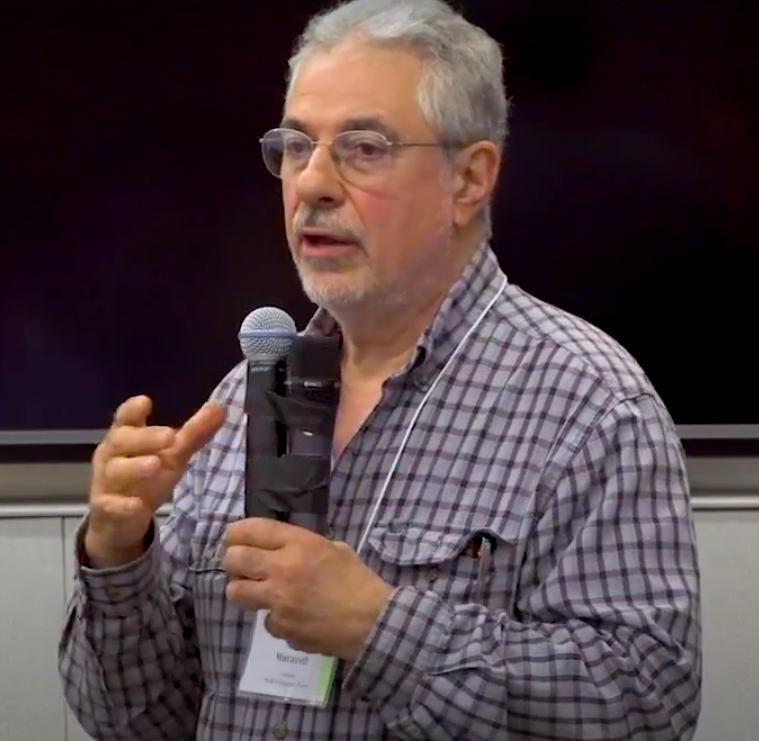
Nick Maravell Farmer, Buckeystown, MD, has been farming organically for more than 40 years, using a diversified grass-based farming system, with an 8- 12 year rotation. Committed to developing local and regional food systems, Nick has helped establish and operate several farmer cooperatives, has conducted on- farm organic research in cooperation with USDA and Land Grant Universities, and has worked on a national organic research agenda and legislation to fund on- farm organic systems research. He has been active in many local, state and national groups dedicated to organic and sustainable agriculture, and was instrumental in establishing the MD Dept. of Agriculture organic certification program. Nick served a five-year term on National Organic Standards Board (2011- 2016).
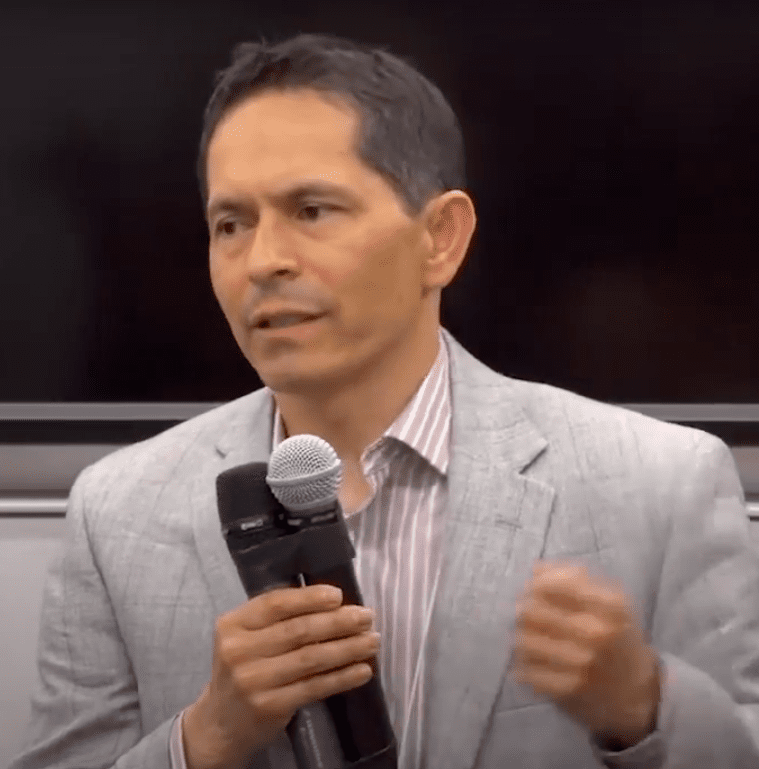
Daniel Medina, PhD, PE, D.WRE, is a Senior Engineer based in LimnoTech’s Washington DC office, who specializes in water resource systems planning and climate change and resilience. His experience encompasses a wide array of water resources areas, especially in urban water issues including flood risk management, water supply, watershed restoration, climate change impacts, and the application of green infrastructure for stormwater management. He led projects in North America, Latin America, the Caribbean, Europe, and the Middle East. He was invited to testify before the U.S. Senate Environment & Public Works Committee. Dan has authored over 80 publications, presentations, and workshops on urban watershed issues. He was co-editor of the latest Manual of Practice for Design of Urban Stormwater Controls published jointly by WEF and ASCE. He is a consultant for the World Bank and was formerly a professor of Civil Engineering at Northeastern University in Boston, Massachusetts.
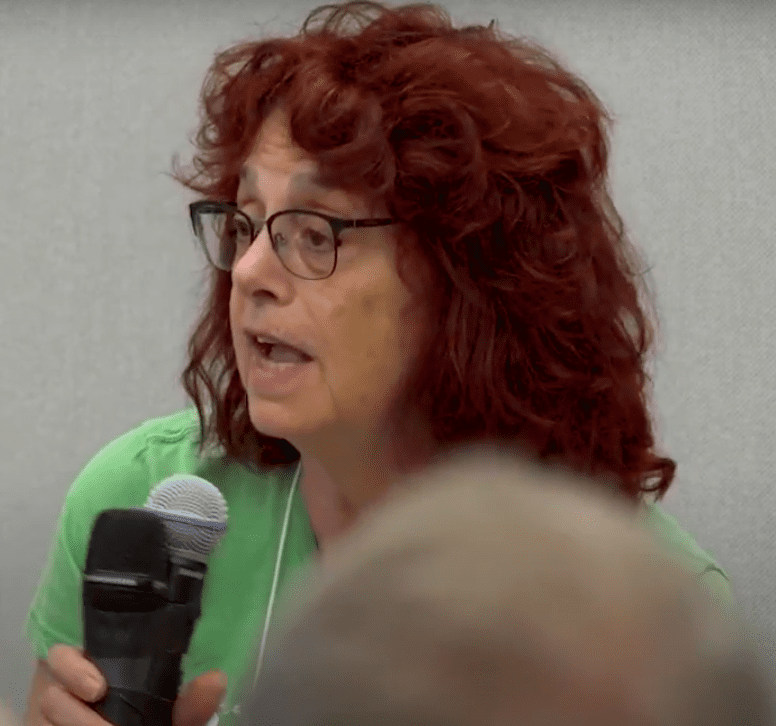
Margaret Morgan-Hubbard, Founder and CEO of ECO City Farms, is an organizer, educator, activist and life-long environmentalist. Morgan-Hubbard’s prior professional experience includes: directing the Engaged University at the University of Maryland; leading the Office of Communications at the US Environmental Protection Agency; heading a national environmental organization and managing DC’s Low Income Weatherization and related Block Grant housing programs. She is a state-certified compost site manager, an active member of the Port Towns Community Health Partnership, and a recipient of the National Capital Area Chapter American Planning Association’s Distinguished Leadership of a Citizen Planner award. Morgan-Hubbard holds a BA from Bennington College, a Masters from Columbia University, and a second Masters from New School for Social Research, where she also completed her coursework for the PhD.
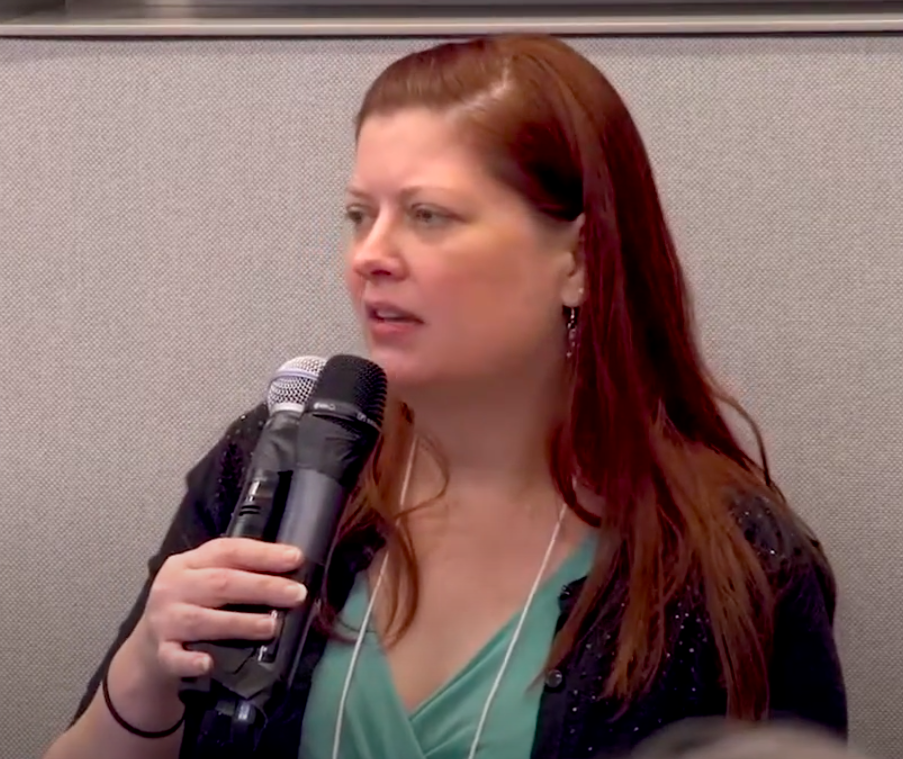
Betsy Nicholas, Executive Director, WATERKEEPERS® Chesapeake and Fair Farms, has more than 16 years of experience in environmental law and policy. Upon joining WATERKEEPERS® Chesapeake in December 2012, she saw an opportunity to help farmers develop management practices that benefited the farmers and improved water quality. With much outreach and collaboration, Fair Farms Maryland was born. Fair Farms is now a movement of Marylanders of all stripes, working together for a new food system — one that’s fair to farmers, invests in homegrown, healthy food, and restores our waterways instead of polluting them. www.waterkeeperschesapeake.com
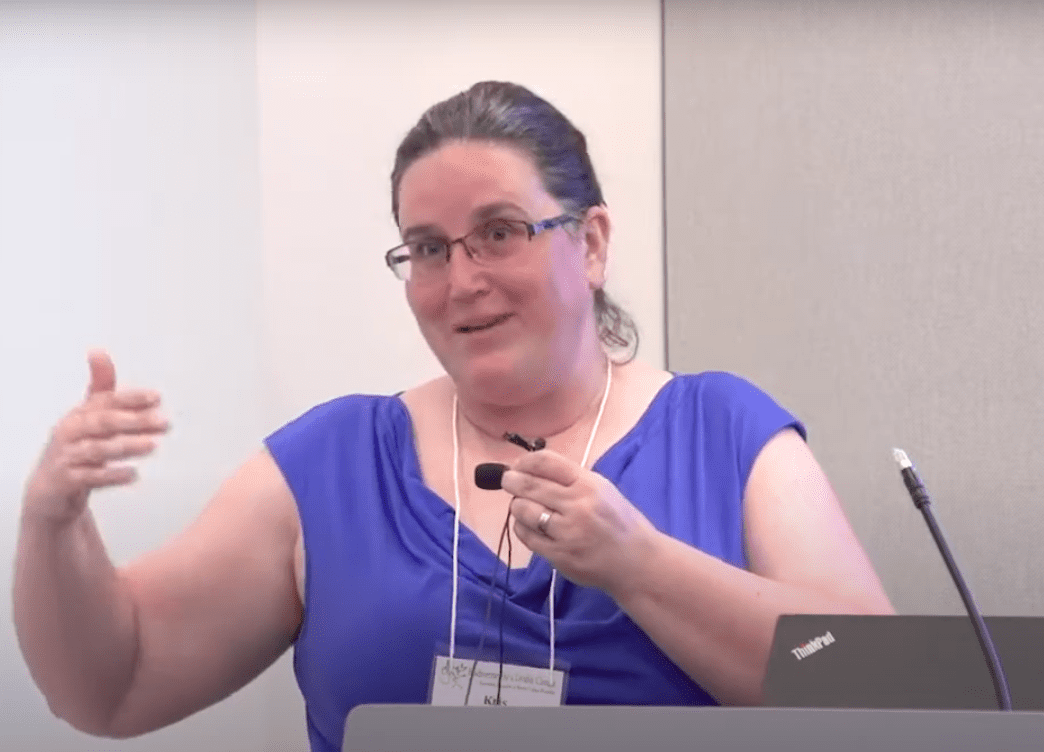
Kris Nichols, Chief Scientist, Rodale Institute, examines the impacts of management such as crop rotation, tillage practices, organic production, cover crops, and livestock grazing on soil aggregation, water relationships, and glomalin at the Institute. She received a Bachelor of Science in Plant Biology and in Genetics and Cell Biology from the University of Minnesota, a Masters in Environmental Microbiology from West Virginia University, and a Ph.D. in Soil Science from the University of Maryland.
Dr. Nichols has worked as a Soil Microbiologist with the USDA for over 14 years, the first three in Beltsville, MD and then at Agricultural Research Service (ARS) Northern Great Plains Research Laboratory (NGPRL) in Mandan, ND for the next 11 years.
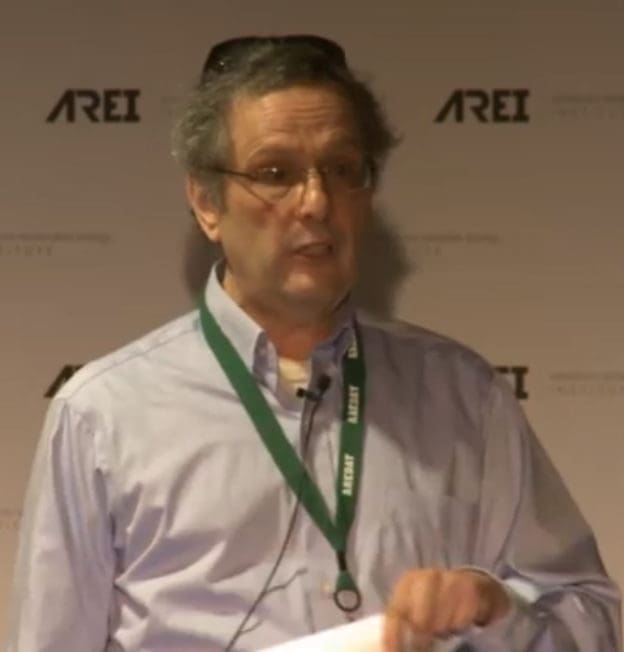
Adam Sacks has had careers in education, holistic medicine, computer technology, politics and advocacy. For five years he directed a non-profit that worked with communities invoking basic democratic and constitutional principles to oppose detrimental local corporate activity. He has been a climate activist for the past sixteen years and has been studying and writing about Holistic Management since 2007. On the side he is an artist, writer, and student of classical piano. His primary goal is regeneration of biodiversity and a livable planet.
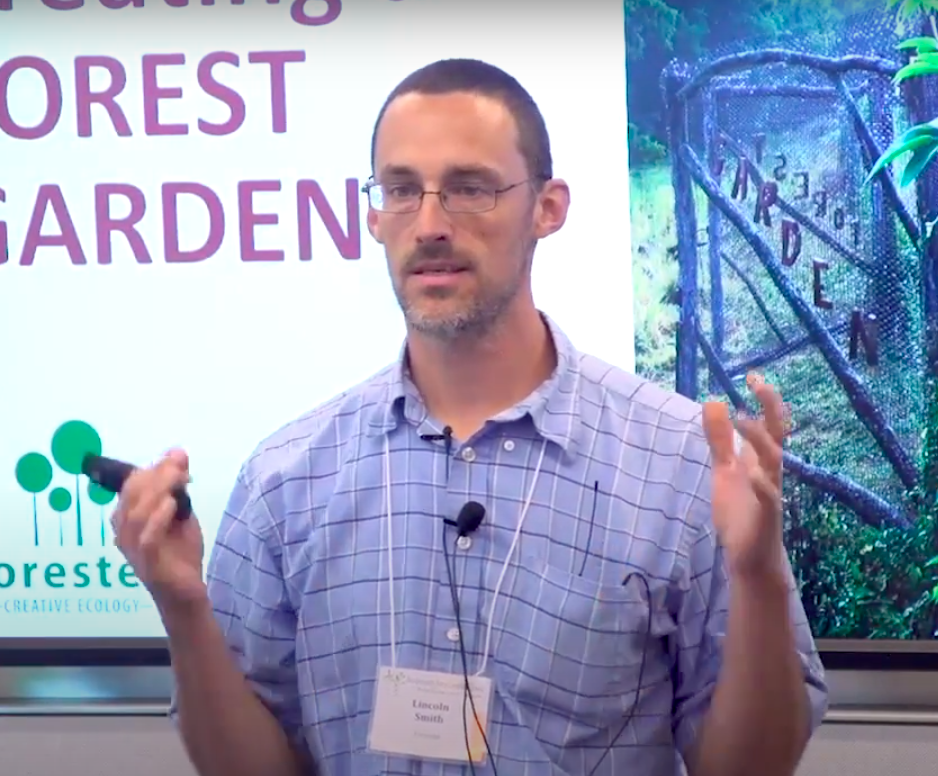
Lincoln Smith runs Forested, a 10-acre forest garden in Bowie, MD. He tests forest farming methods, educates aspiring forest farmers, consults on new forest farms and brings forest products to market. He produces a forest garden farm share, has designed food forest parks planted in the DC region, and holds forest-to-table events. Check out the National Geographic article about his forest garden in Bowie, MD (www.Forested.us).

Ling Tan is a founding member of Safe Grow Montgomery, an all-volunteer coalition that advocates for safer communities through healthy, pesticide-free lawns and outdoor spaces. Safe Grow Montgomery's efforts has made Montgomery County, Maryland, the first county in the country to enact legislation that would restrict the use of harmful lawn pesticides on public and private properties. She is also the pesticide chair of Sierra Club Maryland, working on related state legislations and grassroots pesticide campaigns.
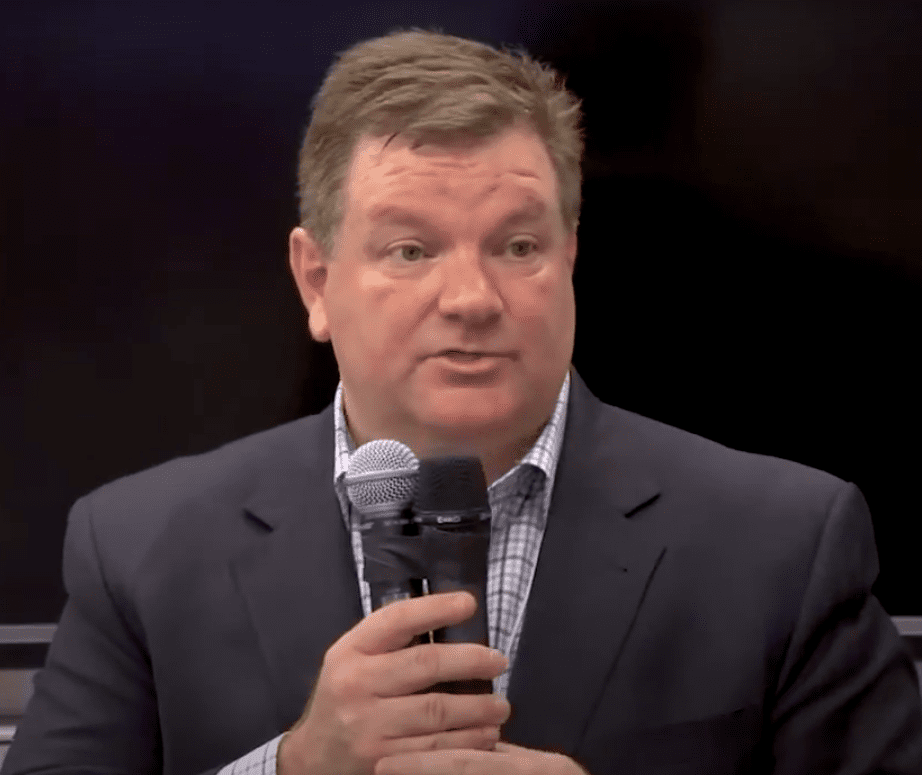
Claudio H. Ternieden is the Senior Director of Government Affairs and Strategic Partnerships at Water Environment Federation in Alexandria, VA. Claudio directs WEF’s legislative and regulatory efforts in Washington, DC with both Congress and federal agencies and works to represent water professionals in our nation’s capital. Before coming to WEF, Claudio worked with several other organizations on water systems and environmental regulation, including the Water Environment & Reuse Foundation (WE&RF), the American Association of Airport Executives (AAAE), and the U.S. Environmental Protection Agency (EPA) in Washington, DC. Claudio has a doctorate in jurisprudence (JD) from Pace University School of Law (White Plains, NY), a Master Degree in Public Policy (MPP) from George Mason University (Arlington, VA), and a BA from Concordia College (Bronxville, NY).
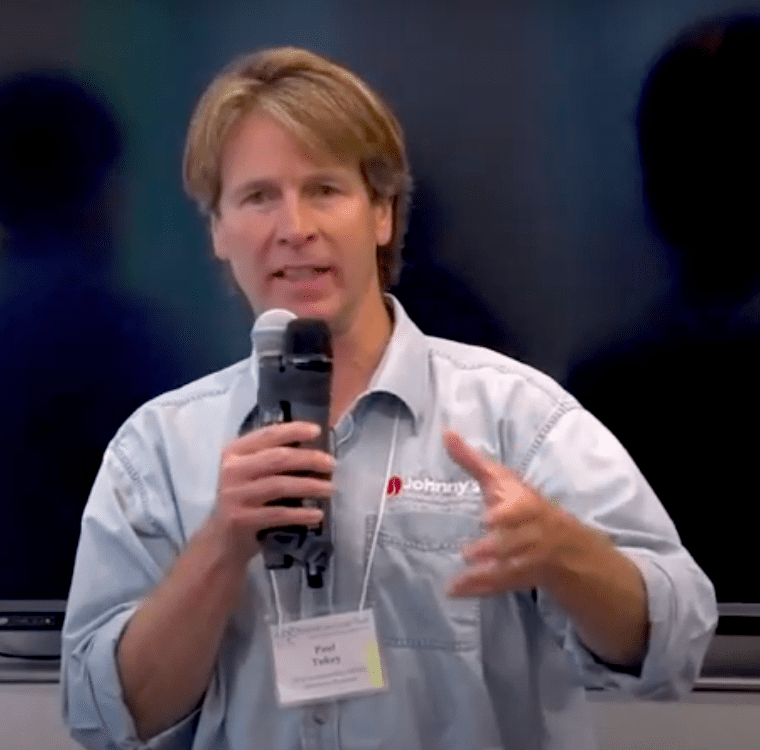
Paul Tukey, Author, The Organic Lawn Care Manual, and Chief Sustainability Officer, Glenstone Museum, is credited with spearheading the movement against utilization of synthetic chemical pesticides on lawns. Paul Tukey is an internationally recognized and honored sustainability consultant, entrepreneur, author, publisher, lecturer, filmmaker, television host and producer. A dynamic leader of several high-profile organizations in both the for-profit and non-profit sectors, and a sought-after consultant and public speaker, he currently develops sustainability protocols for the Glenstone Foundation near Washington, DC.
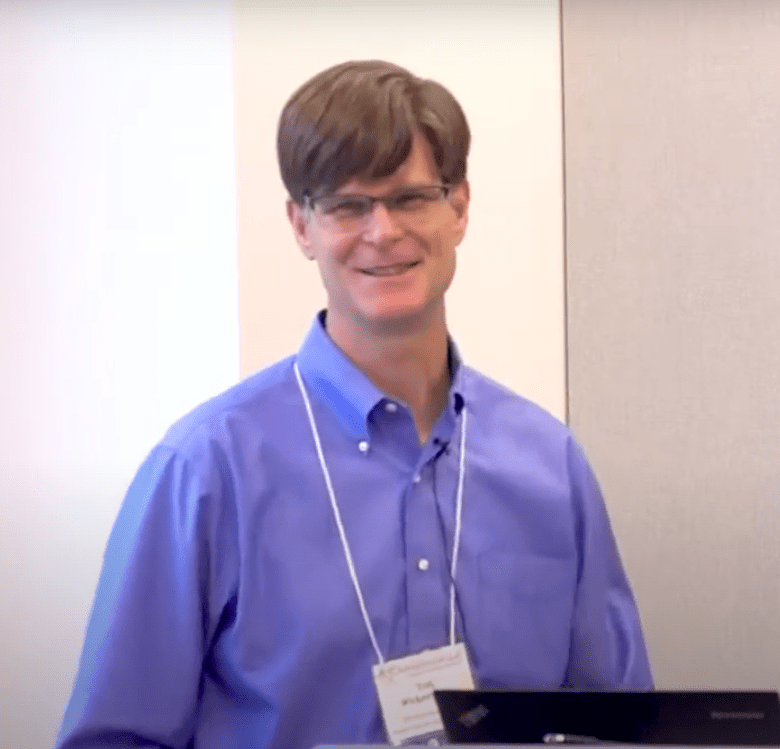
Theodore “Tod” S. Wickersham, Jr., President of Beneficial Results LLC, focuses on assisting businesses and nonprofits improve their operations / profitability, build alliances, enhance collaboration, lead stakeholder groups, open markets, influence public policy, and achieve program objectives that also result in improved water and air quality, and reduced carbon dioxide, methane, nitrous oxide and diesel/toxics pollution. In preparation of the 2018 Farm Bill and with the new science on soil health, he is working at the intersection of Climate and Agriculture/land-use to benefit farmers, ranchers, the environment and health. He also actively collaborates with Biodiversity for a Livable Climate in Washington, DC and Maryland. www.beneficialresults.com
8:30 a.m. – Registration, Coffee, and Conversation
Note: Breaks will be brief.
9:00 – Welcome and Overview
Philip Bogdonoff, Director, Washington DC Chapter, Biodiversity for a Livable Climate
Adam Sacks, Executive Director, Biodiversity for a Livable Climate
9:15 – Back to 300 (Nature Wants to be Wet and Cool)
Many strategies exist for taking carbon dioxide out of the atmosphere and rehydrating the continents. Jim Laurie will review a broad vision of the potential for each ecosystem to be restored and to sequester carbon, building a graphic showing the global potential and timescale.
Jim Laurie, Restoration Ecologist, Biodiversity for a Livable Climate
9:45 – Regenerative Farming
Farmers have the potential to be the front-line heroes in the quest to reverse global warming. They manage a “technology” for massive planetary geotherapy that is tried and tested and available for widespread dissemination right now. It costs little and is adaptable to local contexts the world over. It can be rolled out tomorrow providing multiple benefits beyond climate stabilization. It’s farming the way the Earth does – with water, soil, land, clean air, and a stable climate. It’s farming like human health, animal health, and ecosystem health matter. It’s farming in a way that restores and even improves on soil’s natural ability to hold carbon. By emphasizing whole systems — and food systems functioning as a whole — farmers can increase productivity while healing the planet.
Kris Nichols, Chief Scientist, Rodale Institute
10:20 – Q&A with Jim and Kris
10:30 – Break
10:45 – Agriculture and Land Management
Restorative land management includes regenerative grazing and agricultural practices that build healthy soils and support a diversity of life above and below ground. It applies to a range of settings, from urban to rural, and from small to large-acreage farms and ranches. Managing for ecosystem health brings a host of co-benefits, ranging from the production of more nutritious foods to increasing resilience against droughts and floods to building local economies and stronger communities.
Panel moderator: Gina Angiola, Deputy Director, DC Chapter, Biodiversity for a Livable Climate
Panelists:
* Margaret Morgan-Hubbard — ECO City Farms
* Ed Huling — New Day Farms
* Cleo Braver — Cottingham Farm
* Nick Maravell — Nick’s Organic Farm
Q&A with Panelists
Announcements
Noon – Organic Lunch (included with registration)
1:00 – New Water Paradigm Introduction
Our conventional view of water for decades has been to send it out to the oceans as quickly as possible. A new water paradigm developed by Michal Kravcik and colleagues explains why it’s so important to keep water where it lands on the ground for as long as possible. This simple shift in water management can make a dramatic difference in the course of global warming.
Adam Sacks, Executive Director, Biodiversity for a Livable Climate
1:20 – The Small Water Cycle as a Climate Tool
Healthy soils and water cycles are closely intertwined. Opportunities abound to restore fresh and saltwater wetlands, and to manage urban, suburban and rural water flows in ways that help cool the planet. Nature has fascinating and powerful systems for water cycling; working WITH nature is vital to restoring healthy biodiverse ecosystems, to building resilient communities, and to cooling our human environment. Examples include small and large water cycles, the role of animals like beavers in restoration efforts, human engineering strategies at local, state, national, and international levels, wetland restoration, and living shoreline programs.
Panel moderator: Charlene Johnston, Washington DC Chapter, Biodiversity for a Livable Climate
* Dan Medina, PhD, PE, D.WRE – Senior Engineer, Limnotech
* Emily Landis – The Nature Conservancy
* Claudio Ternieden – Water Environment Federation
Q&A with Panelists
2:30 – Break
2:45 – Food Forests and Permaculture
Perennial food systems can play a vital role in developing sustainable food supplies while restoring ecosystems. Food forests work WITH nature to restore carbon, water, and nutrient cycles, optimizing food production while minimizing requirements for external inputs. New food options abound and can be grown in back yards and local communities. Permaculture principles have broad application to building resilient communities.
Lincoln Smith & Ben Friton of Forested
Q&A with Lincoln and Ben
3:30 – Community and Movement Leaders: Legislation, Advocacy, and What Can I Do?
There are many ways to participate in this transformative movement to build sustainable, healthy, resilient communities and to restore ecosystem function. From engaging elected officials, to using your wallet to support regenerative/restorative activities, to transforming your own front or back yard to sequester more carbon, to growing your own food. All of us have a role – or many roles – to play in reversing global warming, restoring ecosystem health and ultimately cooling the planet to a safe average temperature.
Panel moderator: Tod Wickersham, Washington DC Chapter, Biodiversity for a Livable Climate
* Paul Tukey, Author, Organic Lawn Care Manual, Chief Sustainability Officer,
Glenstone Museum
* Alexis Baden-Mayer, Esq., Political Director, Regeneration International and Organic
Consumers Association
* Ling Tan, founding member of —Safe Grow Montgomery
* Betsy Nicholas, Executive Director, Waterkeepers Chesapeake and Fair Farms
Note: Author Paul Tukey will be available to sign books at the end of the conference.
Q&A with Panelists
4:30 – Community Conversation and Concluding Remarks
Real Climate Reality
Based on widely accepted scientific measurements, global emissions reduction efforts, while essential, have not succeeded in reducing levels of atmospheric greenhouse gases.
The annual rate of carbon released into the atmosphere is accelerating (for many reasons which need not be discussed here). Reducing emissions and building out alternative energy are necessary but insufficient to address global warming and, based strictly and objectively on atmospheric carbon numbers, have yet to show significant signs of success.
While we have gone through many phases of optimism – and a dramatic change is always possible – there is little evidence that such necessary atmospheric carbon reductions will take place in a suitable time frame. Indeed, the unprecedented rate of growth of atmospheric carbon to over 3 ppm during 2016 despite major advances in development and deployment of alternative energy is testament to an incomplete and not-yet-effective strategy. (See http://www.esrl.noaa.gov/gmd/ccgg/trends/gr.html.)
The only practical, inexpensive and readily available “technology” for the massive carbon drawdown necessary is photosynthesis and associated biodiverse processes. Such essential eco-restoration brings many advantages, including low cost, high food productivity, mitigating and often ending floods and drought, local economic self-sufficiency, and eliminating conflicts over scarcity. Land managers across the world have decades of eco-restoration experience on millions of acres. Evolving management approaches are highly effective and well-known outside of the conventional management practices that created the problem in the first place.
It is therefore time to reassess our climate strategies and proceed accordingly.
The Power and Promise of Biodiversity: Visions of Restoring Land, Sea and Climate
The Power and Promise
of Biodiversity: Visions of
Restoring Land, Sea and Climate
Click here to view videos!
Saturday, April 30, 2016
A conference at Harvard University
Geological Lecture Hall
24 Oxford Street
Cambridge, Massachusetts, USA
Tickets: Regular, $50; Early-Bird (by April 11th), $35; Students/Low-Income, $15
Biodiversity is the foundation of a healthy ecosystem. Biodiversity varies from habitat to habitat, but an abundance of different species in any habitat provides the resilience and strength necessary for a system as a whole to survive and to thrive despite the inevitable changes Mother Nature casts its way.
 Sea anemones from Ernst Haeckel’s
Sea anemones from Ernst Haeckel’s
Kunstformen der Natur (Art forms of Nature), 1904
In this conference we will present the concepts, history, and processes for the restoration of biodiversity, along with its myriad benefits. We will emphasize how we can apply what we’ve learned from a variety of cultural and species perspectives to advocate for regeneration of healthy, biodiverse landscapes that draw down atmospheric carbon, restore water cycles and reverse global warming. Finally, we will consider many environmental and social issues that we now face, and examine how biodiversity is at the heart of the solutions — not only for humans, but for the whole interconnected web of life that has made Planet Earth unique in the known universe.
We invite sponsorship and partnership from individuals and organizations, which may include support for conference organizing, publicity, administrative support, venue, and operating expenses. For inquiries please contact climate2016@bio4climate.org
For further background information, please see our Resources page.
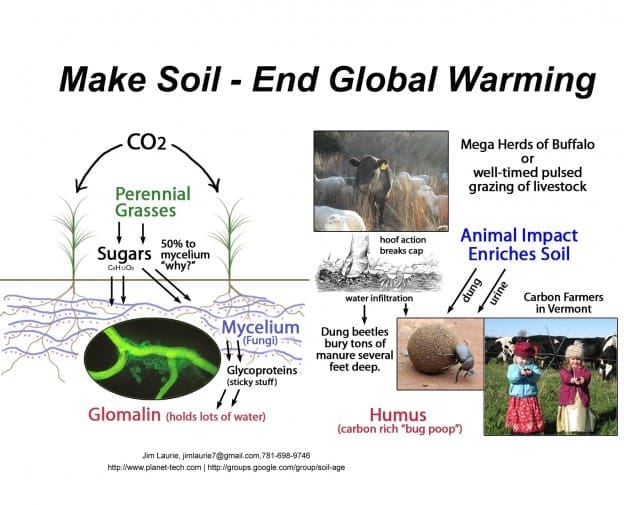
Restoring Ecosystems to Reverse Global Warming, Washington D.C. 2015
Restoring Ecosystems to Reverse Global Warming, Washington, DC
Promoting the power of nature to remove excess carbon from the atmosphere where it does untold damage, and restore it to the soils where it supports abundant life and helps reverse global warming.
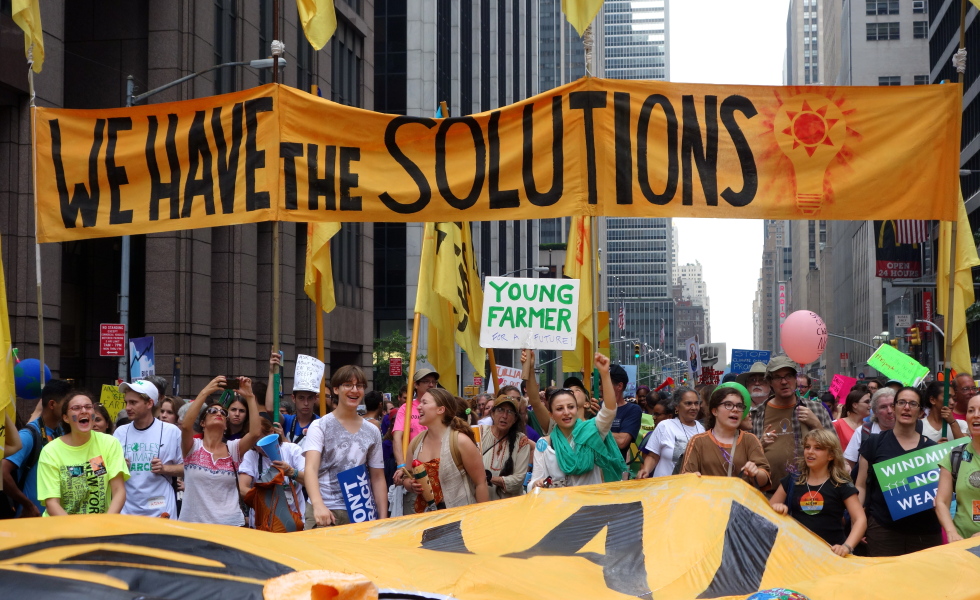
Source: http://bostongreenschools.org/
Saturday, September 26, 2015, 10:00 a.m. to 5:00 p.m.
Moot Court Room
David A. Clarke School of Law
University of the District of Columbia
4340 Connecticut Avenue Northwest
Washington, DC 20008
Sponsored by Moral Action on Climate, People Demanding Action,
and the University of the District of Columbia Law School
Thank you to all who participated in this extraordinary event! We’ve received many enthusiastic responses from conference attendees.
“It was an awesome conference!”
“Bravo on a conference well done! This most certainly has laid a very strong foundation for the longer program ahead!”
“Thank you for the inspired leadership in making this conference happen. I was thrilled to be part of it! There is a new sense of hope in me that we can actually make a difference!”
Program
Desired Outcomes:
- Introduce people to the new ideas that represent the other side of the CO2/Climate Equation – the biological “sink”
- Emphasize that the task is broader than just the atmospheric CO2. It is also about ecosystems and how humans can partner with Nature
- We want people to meet each other and become part of a WDC area community working together (scientists, students, activists, farmers, policymakers, thought leaders) to promote these ideas
- Leave the conference inspired with hope and with ideas for how to take action
Outline of the Conference:
- Welcome and Overview
- The Science of ecosystem restoration to sequester carbon
- Land Management to restore soil fertility, produce nutritious food, and increase soil carbon
- Restoring Water Cycles to reduce droughts and flooding and to cool the planet
- Local Connections
- Activism / Taking it Home
The general format is 20 minutes of speaking & 10 minutes of Q&A per each 30 minute session, with some deviations here and there. Our speakers will be sharing a lot of new information and our format will limit their ability to go into much depth. Please understand when the ticking clock means we need to go on to the next speaker. We hope the new ideas inspire you to learn more on your own.
10 – 10:30 am – Session 1: Welcome and an Overview of the New Climate Paradigm
Philip Bogdonoff, Biodiversity for a Livable Climate– Welcome & Logistics
Joe Libertelli, UDC David A. Clarke School of Law, Director of Alumni Affairs – Welcome
Adam Sacks, Biodiversity for a Livable Climate – The Other Side of the Climate Change Equation
Meet the organizers and sponsors of the conference, with an overview of the day, learn what to expect and what we hope will happen next in the soil carbon and climate endeavor. This conference is an important step on an urgent yet remarkable and rewarding journey. You are all a central part of this as-yet unwritten saga to address the intertwined issues of habitat loss and climate change.
10:30 – 11 am – Session 2: State of the World
Dr. Leah Rampy, Climate Leadership Project
To allow us all to have a basic reference point about the state of the world’s climate, Dr. Leah Rampy will provide, by way of excerpts from the slides provided by Al Gore’s Climate Reality Project, a recap of where we are and the most recent signs that our planet is warming.
Q&A [10 minutes]
11 – 11:30 am – Session 3: The Amazing Power of Nature:
Sequestering Carbon through Ecosystem Restoration
Jim Laurie, Restoration Ecologist, Biodiversity for a Livable Climate
Bringing degraded lands back to life may be easier and faster than we generally think. Mostly it has to do with us humans helping by restoring keystone species that we previously destroyed. We already know how to do this: using low- or no-tech approaches, restoration ecologist Jim Laurie has seen rapid and dramatic restoration unfold more times than he can count – and he’s amazed every single time. He’s happy to share his insights and inspirations with us.
Q&A [10 minutes]
11:30 – 11:45 am – COFFEE BREAK
11:45 am – 12:15 pm – Session 4: Nutritious Food Starts in the Soil
Dan Kittredge, Bionutrient Food Association
Everything we eat depends on the health of the soil. When essential minerals are missing from the soil, they’re missing from the plants and animals that feed us. Our health suffers and disease can run rampant, common consequences of industrial agricultural practices. Dan Kittredge, lifelong farmer and nutrition expert, explains how it works and how we can bring new life to our soils, to biodiversity on planet earth, and to ourselves.
Q&A [10 minutes]
12:15 pm – 12:45 pm – Session 5: Holistic Management in Practice: The Ecological, Economic, and Social Benefits
Precious Phiri, Founding Director, EarthWisdom Consulting Company
Precious Phiri directs engagement and training for villages in the Hwange Communal Landsregion that are implementing restorative grazing programs using Holistic Land and Livestock Management in Zimbabwe. This cost-effective, nature-based and highly scalable solution helps rural communities in Africa to reduce poverty, rebuild soils, restore food and water security, and reduce drought and flood risks. Precious was born and raised in one of these communities now implementing restorative grazing.

12:45 – 1:45 pm – LUNCH
Bring your own brown-bag lunch or go out to local restaurants.
1:45 – 1:50 pm – Recap and a few thoughts
Adam Sacks, Executive Director, Biodiversity for a Livable Climate
1:50 – 2:30 pm – Session 6: Washington DC Regional Carbon Farming (Panel)
Hear from the experience of local farmers about what works and doesn’t and their suggestions for increasing and improving soil carbon farming in this region. Which of the previously-mentioned methods is applicable to our moister climate? What is the most effective way to sequester carbon in the soil? What are the main obstacles each of you needs to overcome? What needs to change in the buying public’s mind and in our regulatory environment to facilitate the growth of soil carbon farming here?
Moderator: Annita Seckinger
1:50 – 1:57 pm Greg Glenn, farm manager, Rocklands Farm – www.rocklandsfarmmd.com/
Greg will share how their holistic agriculture strategy balances economic, social and environmental elements through an ecosystem-management approach, and how they use rotational grazing to regenerate the soil.
1:57 – 2:04 pm Nick Maravell, owner, Nick’s Organic Farm – www.nicksorganicfarm.com/
Nick grows corn, soybeans, barley, and hay; raises chickens and cattle and sells grass-fed meat. He calls himself a “carbon farmer” and says his system is similar to the “English ley” and is adapted to our region’s climate. He will provide his perspective on local farming challenges, the role of small-scale solutions, and the opportunities that exist to get local buy-in for a more closely-knit regional food system, including closing nutrient cycles.
2:04 – 2:11 pm Will Mitchell, Founder, Tenleytown Meat Company – www.tenleytownmeatcompany.com/
After years of being a vegetarian, Will came to understand the importance of animals on the land. He spent a summer on a farm near St. Mary’s City, Md. near Chesapeake Bay, and came home to DC to found Tenleytown Meat to help that farms and other to be able to sustain their wholistic farming practices and offer their healthy food to urban consumers. He says “We care about responsibly growing our company and developing our brand for we believe our presence will be a benefit for the region and its people. The farmers we support use practices that are helping to reverse the trends of our industrial food system. We partner with farms that are centered on healthy animals, clean air, water, and land, that are managed with integrity, and are not blinded by the bottom line.”
2:11 – 2:18 pm Che Axum, Director of the Center for Urban Agriculture and Gardening Education in the College of Agriculture Urban Sustainability and Environmental Sciences (CAUSES) at UDC – http://www.udc.edu/college_urban_agriculture_and_environmental_studies/welcome
In addition to being a native Washingtonian, Che is a third generation farmer. In 1918 after relocating to Washington, D.C. from Alabama, Mr. Axum’s paternal great-great-grandfather started farming in the northeast section of the city. Additionally, his maternal great-grandfather was an established farmer in Mitchellville, Maryland. He will share his perspective on this legacy of farming in the region and what direction it could go in the future, and what needs to done to help get it there.
Q & A [10 minutes]
Jim Laurie, Restoration Ecologist, Biodiversity for a Livable Climate
This session is designed to give a taste of the theme of the next Tufts conference, “Restoring Water Cycles to Reverse Global Warming”, i.e, what we are learning very recently from the work of people like Michael Kravcik about the importance of managing not only for carbon, but also for water (they are closely linked), and the potential of water cycles around the world to help humanity cool the earth in the short term, perhaps giving us some additional time to extract the CO2 from the atmosphere. Jim will also report on the remarkable recovery of the Susie Creek ecosystem in the U.S.’s driest state, Nevada, due to the activities of beavers.

Q&A [10 minutes]
3:00 – 3:30 pm – Session 8: Community Scale Solutions – from Beavers to Biochar (Panel)
We’ll survey a few of the many methods and opportunities for individuals, businesses and new entrepreneurs to contribute to the abundance and self-sufficiency possible through eco-restoration and carbon farming. Endeavors that work with nature are virtually endless, and may include composting, mulch, materials recycling, food production, biogas digestion, organic and solar-driven land care, biochar, soil testing, rock powders, microbial soil treatments, innovative gardening, small farm animals – and more. Learning about these opportunities is the beginning to partnerships to support urban and suburban agriculture and associated services such as business incubators for positive local economic development – and contribute to growing global efforts to reverse global warming, in ways that only nature can!
3:00 – 3:04 pm Moderator: Gina Angiola – Gina will touch on remineralization and Organic Farming 2.0
3:04 – 3:11 pm Biochar – Adam Sacks, Biodiversity for a Livable Climate – www.bio4climate.org
3:11 – 3:18 Compost – Fritz Gottschalk, Veteran Compost – www.veterancompost.com/
3:18 – 3:25 Permaculture / Restoration Agriculture – Lincoln Smith, Forested – http://forested.us/
3:30 – 3:45 pm — COFFEE BREAK
3:45 – 4:15 pm – Session 9: Taking it Home / Action Steps
Larry Kopald, Co-Founder and President of The Carbon Underground [20 minutes]
Advertising professional and environmentalist Larry Kopald views the nature of the paradigm shift that global warming forces us to face. He will review the issues that give us the best leverage moving forward, and will address the human social phenomenon of marketplaces. Stripped to its basics, a marketplace is people having relationships with other people. How can we optimize our use of the marketplace for messages about climate and soils, and move to action on reversing the course of climate.
Q&A [10 minutes]

4:15 – 5:00 pm – Conclusion: Regional, National, and World Action: Paris COP-21 and Beyond
Legislative Action in the US – Sudheer Shukla will discuss the Citizen Climate Lobby’s Carbon Fee & Dividend proposal — the current status of this proposal and its possible expansion to include soil carbon farming.
Young Leaders – What Do We Need to Accomplish at the Paris COP21 Meetings?
Anthony Torres, COP21 Delegate, SustainUS Media Team; Class of 2015, Leadership Program, School of Public Affairs, American University
Climate and Regenerative Organic Agriculture: How to Build a Mass Movement
Alexis Baden-Mayer, Political Director, Organic Consumers Association,
Q&A [10 minutes]
5:00 – 5:15 pm – Fare well and stay in touch!
- Thank you to all of our volunteers, UDC Law School for hosting us, to our speakers, funders, partners People Demanding Action and Moral Action on Climate, and to all you participants!
- Next conference at Tufts: Restoring Water Cycles to Reverse Global Warming, Oct. 16-18, 2015
- Stay tuned for a 2-3 day conference in DC in 2016 – and let us know if you want to help
- How to stay in touch: DC contacts (Philip – philip.bogdonoff@bio4climate.org, Sudheer – sudheerpshukla@yahoo.com), BLC-DC@googlegroups.com, bio4climate.org/
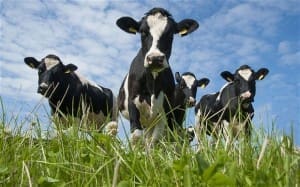
Speakers

Gina Angiola, MD – Retired physician, Board member of Chesapeake Physicians for Social Responsibility, Member, Biodiversity for a Livable Climate, lifelong advocate for healthy environments. As a climate activist for over 12 years and a member of many large environmental organizations, most of her advocacy and action has focused on reducing emissions from the energy sector and from conventional food production. She now recognizes the urgent need to add ecological restoration and enhancement of carbon sinks to the agenda if we hope to re-establish a stable climate system and a livable planet for future generations.
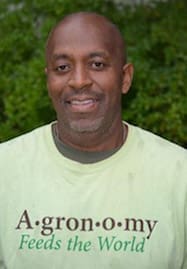
Mchezaji “Che” Axum is the Director of the CAUSES Center for Urban Agriculture. He is a trained environmental agronomist with over 25 years of experience in agriculture. He leads a team of Researchers at the Muirkirk Research Farm in Beltsville, Maryland, and oversees the University’s DC Master Gardener, Specialty/Ethnic Crops and Urban Agriculture certificate programs. Read about Che on the UDC website and on the UDC Just CAUSES Blog.
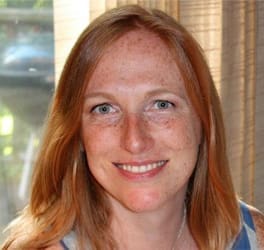
Alexis Baden-Mayer, Esq., Political Director, Organic Consumers Association. The Organic Consumers Association (OCA) is an online and grassroots non-profit 501(c)3 public interest organization campaigning for health, justice, and sustainability. The OCA deals with crucial issues of food safety, industrial agriculture, genetic engineering, children’s health, corporate accountability, Fair Trade, environmental sustainability and other key topics. www.organicconsumers.org/

Philip Bogdonoff, Director, Washington DC Chapter, Biodiversity for a Livable Climate. Past trustee and board chair, Friends Community School; Co-founder, Sustainable Washington Alliance; Vice President, Millennium Institute; Consultant, World Bank Environment Department; Research Assistant, Section of Ecology and Systematics, Cornell University. He and Jim Laurie constructed Washington, DC’s first “Living Machine” more than 15 years ago.
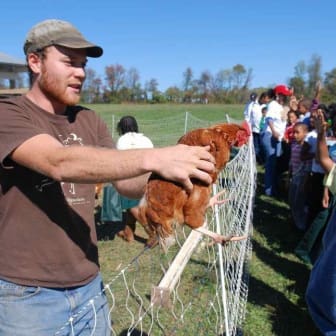
Greg Glenn, Farm Manager, Rockland Farms (Poolesville, MD). During his time at Virginia Tech, Greg developed a passion for farming and local food systems. He studied small business agriculture and regional food systems, was actively involved in the local food system in Blacksburg, VA, and spent time in Kenya and South Africa where he became fascinated with holistic agriculture. After graduating with a degree in Agriculture Economics, he worked and trained in various social programs for resettled refugee training, and took the first steps to begin what would become Rocklands Farm. Rocklands Farm cultivates a bountiful harvest through an ecosystem-management approach to agriculture, utilizing multi-species rotational grazing as the centerpiece for soil regeneration. Rocklands hosts tours for people to gain insight into the dynamic complexities of a farm ecosystem, it’s wider effect on the environment, and how your food choices shape the future. Rocklands has an on-farm market for people to enjoy the bounty of the farm’s harvest, including meats, produce and wine produced at Rocklands.
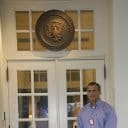
Fritz Gottschalk is a recently retired Army Veteran who served for 25 years in a variety of military operations, focusing mostly on working with foreign militaries. He served in Afghanistan and Iraq, as well as Panama, Haiti and throughout Western Africa. After leaving the military, he became a Maryland State Certified Compost Facility Operator and has worked with Veteran Compost in the DC Metropolitan area. His current position is in sales, research and operational development, as well as making organic compost. In addition, Fritz has begun to work on a Masters Degree in Environmental Resource Policy at George Washington University. www.veterancompost.com/
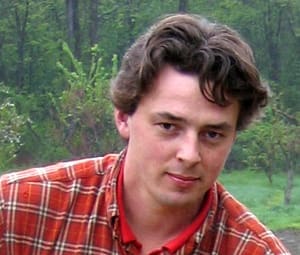
Dan Kittredge is a life-long farmer and founder of the Bionutrient Food Association. He launched The Real Food Campaign (RFC) in 2008, to empower and educate farmers towards the production of quality food for the improvement of human health. In 2008 and 2009 RFC made major strides in developing a cohesive local, national and global vision, and networked nationally to build the base to implement its mission. Under Dan’s leadership in 2009-2010 RFC began holding yearlong courses on Nutrient Dense Crop Production and building a professional team of staff.
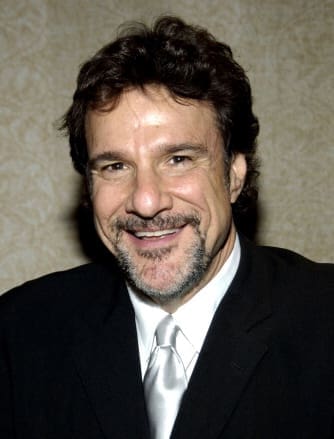
Larry Kopald has been a communications and branding professional for over twenty-five years, working at some of the world’s top advertising agencies. He has overseen the advertising for brands ranging from McDonalds to American Express to Honda, and has helped launch multibillion-dollar brands like Acura, Oracle, and Huggies. Larry has also been a lifelong environmentalist serving on boards like Oceana, the National Marine Sanctuaries, 1% For The Planet and others. He has done the environmental communications for the UN and the Olympics, and his work for the Earth Communications Office was seen in over 100 countries by over a billion people. Larry has been nominated for both Emmy and Grammy awards. He is Co-Founder and President of The Carbon Underground.
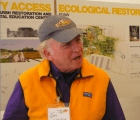
Jim Laurie, Restoration Ecologist at Biodiversity for a Livable Climate, is a biologist from Rice University and is a pioneer in biological remediation of waste water. He was the technical manager of the world’s largest “Living Machine” project to clean raw municipal sewage with no toxic chemicals. The facility, through a grant from the EPA, processed 80,000 gallons/day using the “living machine” methodology invented by ecological visionary, and Buckminster Fuller Award recipient, John Todd. Prior to that, for twenty years Jim was a biologist and trainer in the chemical industry in Houston, TX, where his work with living machines resulted in processing effluent cleaner than possible with conventional technology. Jim has also been a passionate advocate for Holistic Management of grasslands in the past decade. He began studying with Allan Savory twenty years ago in Texas, has spoken about Holistic Management at Harvard, MIT, Tufts, the Stockholm Environment Institute, and at meetings of the Massachusetts Climate Action Network (MCAN) and Northeast Organic Farmers Association (NOFA), and has been instrumental in spreading the message in New England. Jim is also co-founder of a lively and sophisticated Google Group, Soil-Age, and he invites you to join!

Joe Libertelli directs Alumni Affairs, and helps coordinate public relations for the School of Law. He earned his B.A. from Princeton University and J.D. from Antioch School of Law. He has been Executive Director of Metro D.C. Environmental Network, and is a co-founder of the Gibson Hollow Limited Liability Company, which runs a cooperative ecological mountain retreat in the Shenandoah Mountains. He is a member of the D.C. School of Law Foundation, and was a founding National Advisory Board Member of the Progressive Democrats of America. http://www.law.udc.edu/staff/details.asp?id=10284
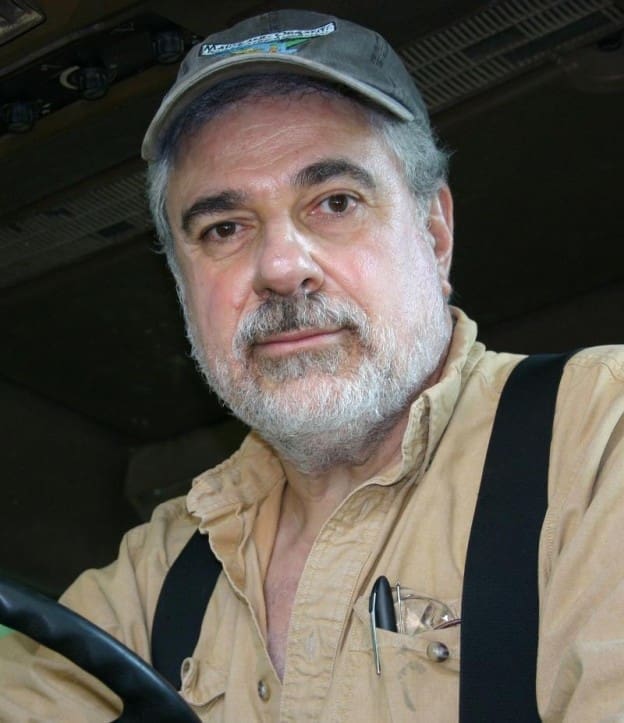
Nick Maravell, Owner of Nick’s Organic Farm. Nick has been farming organically for more than 40 years. After experimenting for several years, he started farming on a commercial basis in Purceville, Virginia in 1979. Concerned about the soil, environment, energy conservation, and fresh, local, healthy food, he began by selling vegetables to restaurants and local food co-ops, and at farmers markets. In 1980, he moved his vegetable operation to leased land in Potomac, MD. In the mid-90s, Nick and his wife, artist Tory Cowles, purchased a 165-acre farm in Buckeystown, near Frederick MD, while continuing operations in Potomac until 2012.
Nick’s Organic Farm uses a diversified organic farming system that combines plants and animals. Nick sells directly to consumers, other farms and a few retailers and restaurants. Various on-farm value-added activities include processing organic chickens and turkeys, grinding organic livestock feeds and cleaning and conditioning GMO free organic seed. The farm’s livestock products include 100% grass-fed Angus beef, sausages, jerky, pastured chickens and turkeys, free-range eggs and honey. The farm’s crop products include heirloom food-grade grinding corn and popcorn, fresh soybeans (edamame), ground poultry feeds, heirloom GMO free soybean seed and corn seed, small grain and cover crop seed, alfalfa and grass hays, straw and field crops such as corn, soybeans, barley, rye, and hairy vetch.
Committed to developing local and regional food systems, Nick has helped establish and operate several farmer cooperatives. He is also active in many local, state and national organizations dedicated to organic and sustainable agriculture. He is a founding member of the Maryland Organic Food and Farming Association (MOFFA), the Maryland Small Farm Cooperative, and Future Harvest-Chesapeake Alliance for Sustainable Agriculture (Future Harvest-CASA). Nick has also worked closely with other farmers and scientists at the Organic Farming Research Foundation to publish the National Organic Research Agenda. www.nicksorganicfarm.com/
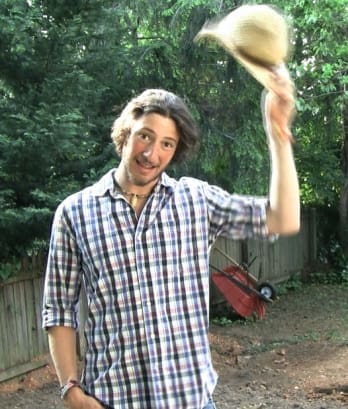
Will Mitchell, Founder of Tenleytown Meat Company. Tenleytown Meat Company was founded to effectively connect responsible local farms with DC area residents seeking a change to our modern food system. Tenleytown Meat Company is a small distribution service helping to build a sustainable market of holistically managed, pasture-raised meat for DC area farmers, processors, and eaters. www.tenleytownmeatcompany.com/
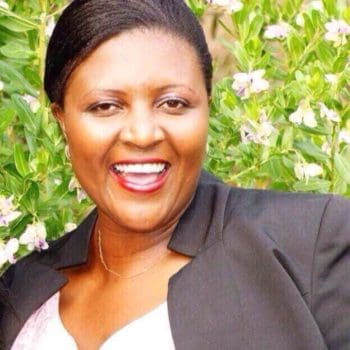
Precious Phiri is the Founding Director of EarthWisdom Consulting Company. She was formerly a Senior Facilitator at the Africa Center for Holistic Management (ACHM) in Zimbabwe where she directed training for villages in the Hwange Communal Lands region that are implementing restorative grazing programs using Holistic Land and Livestock Management. She helps rural communities in Africa to reduce poverty, rebuild soils, and restore food and water security. This nature-based solution has been successfully used on different landscapes in Africa and the Americas. Precious was born and raised in one of the communities now implementing restorative grazing.
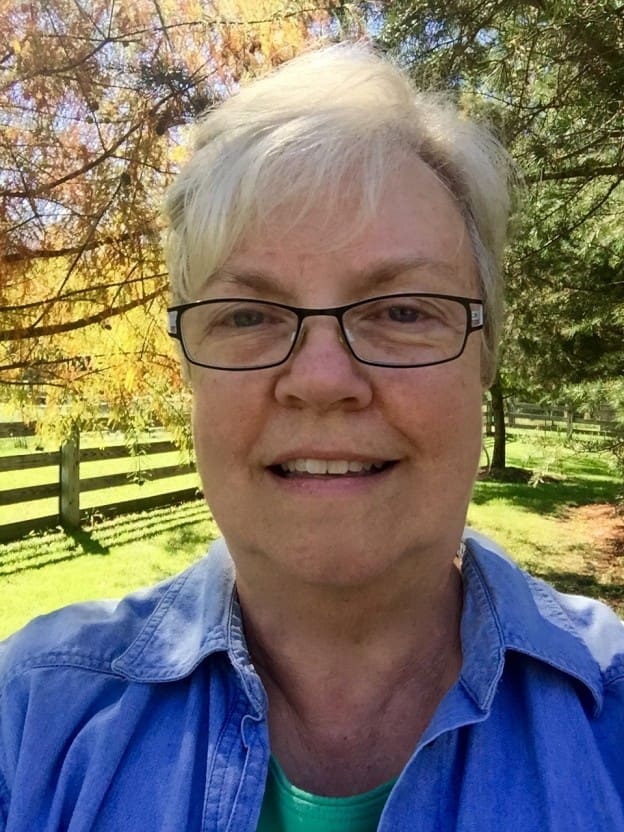
Leah Rampy, Ph.D. is a member of the Climate Reality Leadership Corps, a group of activists trained by Al Gore and committed to telling the story of climate change to inspire action. Frequently joined by her daughter Ana, Leah has presented to numerous religious groups, students, and non-profits. Leah’s career spans executive leadership positions in Fortune 50 companies, a decade running her own business focusing on executive coaching and leadership consulting, and service as Executive Director in a small non-profit. Currently she and her husband David are working on a permaculture design for their eight-acre farm in the Shenandoah Valley.
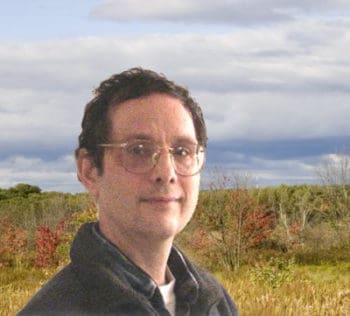
Adam Sacks is executive director of Biodiversity for a Livable Climate. He has had careers in education, holistic medicine, computer technology, politics, and advocacy. A climate activist for the past 15 years, he has been studying and writing about Holistic Management since 2007. His primary goal is regeneration of biodiversity and a livable planet.

Annita Seckinger is a soils and water scientist who works as a consultant for a range of organizations. She is also the founder and president of the Watts Branch Watershed Alliance, an organization dedicated to the preservation and restoration of the Watts Branch Watershed in Montgomery Country, Maryland. Annita and Dr. Ray Weil are currently collaborating on projects that deal with soils, health, restoration and reforestation in an indigenous community in northern Mexico.
Additionally, Annita has worked with children – both domestically and abroad – on issues pertaining to health and nutrition.For more than ten years she has worked to bring healthy, locally sourced food back to Maryland’s elementary, middle and high schools; concurrently, she has stressed the importance of an environmental education for young people of all age groups. Annita holds degrees from the University of Maryland and the Blekinge Institute of Technology in Karlskrona, Sweden.

Sudheer Shukla, Biodiversity for a Livable Climate outreach coordinator and DC Area Maryland Coordinator at Climate Change is Elementary, which leads climate awareness activities for elementary school students and their families. Sudheer is also involved with Citizens Climate Lobby.

Lincoln Smith runs Forested.us, a 10-acre forest garden research site in Bowie, MD. He teaches or co-teaches all courses at Forested, and designs forest gardens. He is passionate about production ecosystems, and brings a background in agronomic science and sustainable landscape design. Lincoln started Forested, LLC to develop and share research in forest gardening. He is a regular speaker on forest gardening at venues such as University of Maryland, the U.S. Botanic Garden, and the Maryland Master Gardeners’ Conference. Lincoln spent 5 years in a high-end residential landscape architecture office, designing managing installation of big budget landscapes, and pushing sustainability. He holds a Master of Arts in Landscape Design from the Conway School, and earned LEED certification in 2008. He is working on making and marketing acorn foods. http://forested.us/
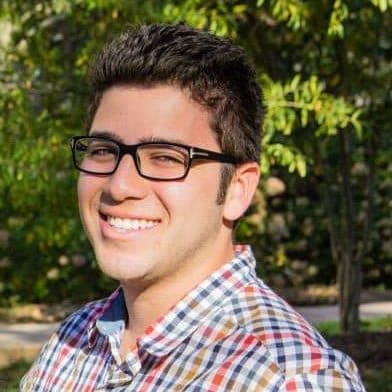
Anthony Torres, is a member of the Class of 2015, Leadership Program, School of Public Affairs, American University. He is pursuing a dual degree in political science and environmental studies with a focus on the intersections of social inequality and climate change. At AU, he has served as an organizer for his campus divestment campaign and is currently the Student Co-Director of the SPA Leadership Program.
In addition to his work on the COP21 Delegation, Anthony has been involved with coastal restoration and resiliency on Long Island, advocacy for organizations like the NY League of Conservation Voters, and projects aimed at encouraging positive social transformation with frontline communities in North India and the Ecuadorian Amazon.
After graduation, Anthony plans to promote just climate policies for communities of color at the national and international level. He is one of 23 US youth delegates SustainUS is sending to Paris for the 21st Session of the Conference of Parties (COP21) of the United Nations Framework Convention on Climate Change (UNFCCC). SustainUS delegates work alongside government officials, civil society representatives, and youth from around the world while organizing direct actions, media outreach, and policy advocacy.
—————————————————————————————————-
We would like to express a big THANK YOU! to our Partners and Co-Sponsors:

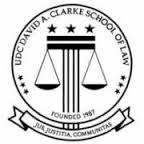

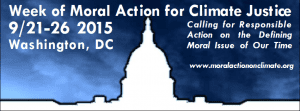
Other Upcoming Events
Restoring Water Cycles to Reverse Global Warming at Tufts University in October, 2015.
Restoring Ecosystems to Reverse Global Warming
Restoring Ecosystems to Reverse Global Warming
– Conference Home –
The conference is over, it was a stunning success – and our work has just begun.
Stay tuned!
November 21-23, 2014
Promoting the power of nature to remove excess carbon from the atmosphere where it does untold damage, and restore it to the soils where it supports abundant life and helps reverse global warming.
Program | Speakers | Sponsors and Partners
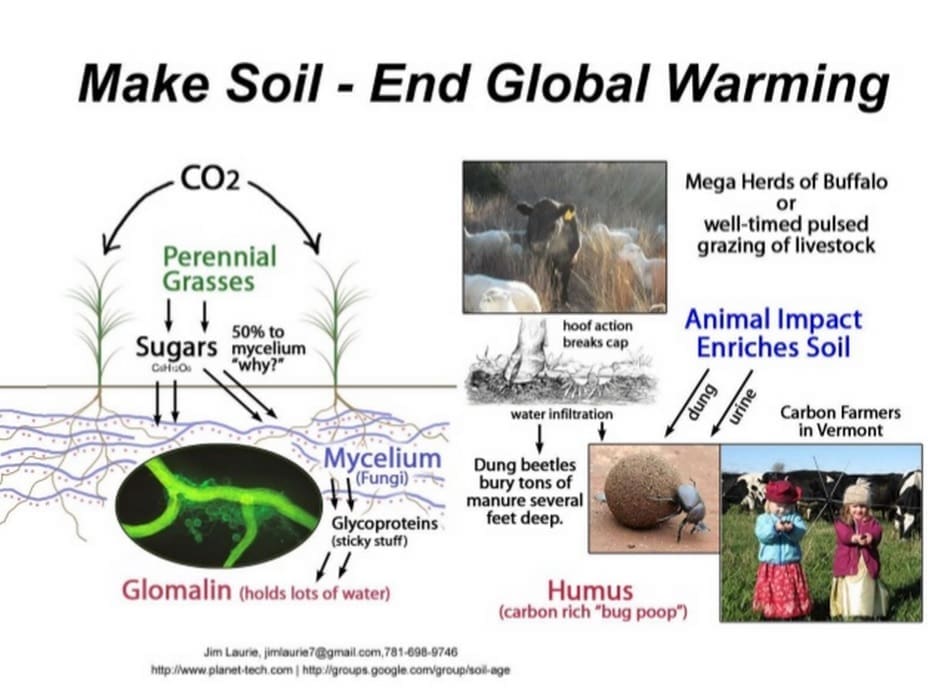
Speaker videos and slides available here on our Program page!
A heart-felt thanks to all of our partners and sponsors, and a special shout-out to our lead sponsors, Tufts Institute of the Environment, Tufts Center for International Environment and Resource Policy, 11th Hour Project, EPIC Bars, Savory Institute, and Virgin Earth Challenge.
Here are just a few of the many unsolicited comments from participants:
“I did make it to several of the talks on Saturday afternoon and workshops on Sunday afternoon. Thanks so much for the reduced rate. I learned so much and feel so much more hopeful about the future of our planet. I look forward to seeing the talks I missed on your website.” – Trudy Macdonald
“. . . let me again thank you for hosting the conference and thereby stimulating a broad community about the carbon sequestration opportunity. You and your team did an outstanding job and the speakers were amazing. There are too many highlights to mention here – it was a strong and deep roster. Big applause to you and your team for so powerfully advancing the mission.” – Tom Newmark
“I was blown away by the conference. Not only by the force of the individual speakers but by the elegance with which the program was put together, like a symphony with its overture and then the movements, with all the careful construction and the echoes…I salute you, and whoever else had a hand in mounting the event. I learned a lot and was able to put together the pieces of the puzzle. I only wish that I had been able to stay for Sunday afternoon, but I had to attend to my classes for this week. Thank you.”
– Janet Beizer
“I’ve been unable to pry myself away from this feed for two days. These people have brought so much energy and expertise to this nexus of information and techniques that seems to be coalescing into something far greater than the sum of its parts. I am beginning to believe that we will not only reverse climate change, but create a fantastic new way of life in the process. Can’t wait for tomorrow’s talks.” – Katherine McGuire
“Thank you to you and the entire Bio for Climate team for envisioning and then actualizing an amazing inaugural conference at Tufts University. It was a true occasion and, I hope, a true turning point. It was energizing and inspiring to learn that there are so many people from different disciplines converging on the elegant and overlooked potential of Nature to aid us in our quest for a stable climate.” – Diana Donlon
“Awesome. Thank you [for posting the videos]. These are such a fantastic, inspiring, deeply informative resource to anyone and everyone who has an interest in ecological restoration. Thanks again for putting together such a fantastic conference! ” – Greg Spevak
 Karoo region of South Africa. The land on the left is reversing
Karoo region of South Africa. The land on the left is reversing
global warming by capturing carbon dioxide and water by
proper use of keystone animal species and land management,
while the land on the right is exacerbating it though soil
degradation and loss of carbon to the atmosphere.
Conference: November 21-23, 2014 Tufts University, Medford, Massachusetts, USA (near Boston) Co-sponsored by Tufts Institute of the Environment (TIE) and The Center for International Environment and Resource Policy (CIERP) at the Fletcher School of Tufts University
Fees: Early Bird Registration extended! Through November 10, 2014, $100. From November 11, 2014, $150. Students/Low Income, $50. School and non-profit delegations, minimum of 4 from a single institution, $35 per person. Tufts students, faculty and staff, $15 High school students, $10. Ten work exchange slots available (contact climate2014@bio4climate.org). Register for the conference here.
“Why do we want to host a conference like this? Because harnessing biology represents a new paradigm for climate mitigation that gives us hope.”
– Antje Danielson, Director, Tufts Institute of the Environment
“Biodiversity for a Livable Climate is championing a new and hopeful narrative in our fight against anthropogenic climate change. I encourage my colleagues in impact to join me in supporting them. “
– Howard Fischer, Environmental Philanthropist
“We must mobilize the biosphere to remove carbon dioxide rapidly from the atmosphere and store it in plants and soils. Only such restoration has the potential to store enough carbon to avoid the worst aspects of global warming. I urge students, colleagues and the public to attend the Biodiversity for a Livable Climate Conference.”
– William Moomaw , Director (Retired), Center for International Environment
and Resource Policy, The Fletcher School, Tufts University
We are telling a new story. Each of our speakers presents a chapter in the remarkable narrative of life on earth in the 21st century. We humans are a key part of that narrative, and while there are many parts they all come together in a single tale. We will weave those parts together so that each presentation is part of the whole, a whole that builds a different and more hopeful worldview than we’ve heard in a long time. We have a lot of work to do and heavy paradigms to shift, but we can and will tell the new story with exciting and hopeful outcomes.
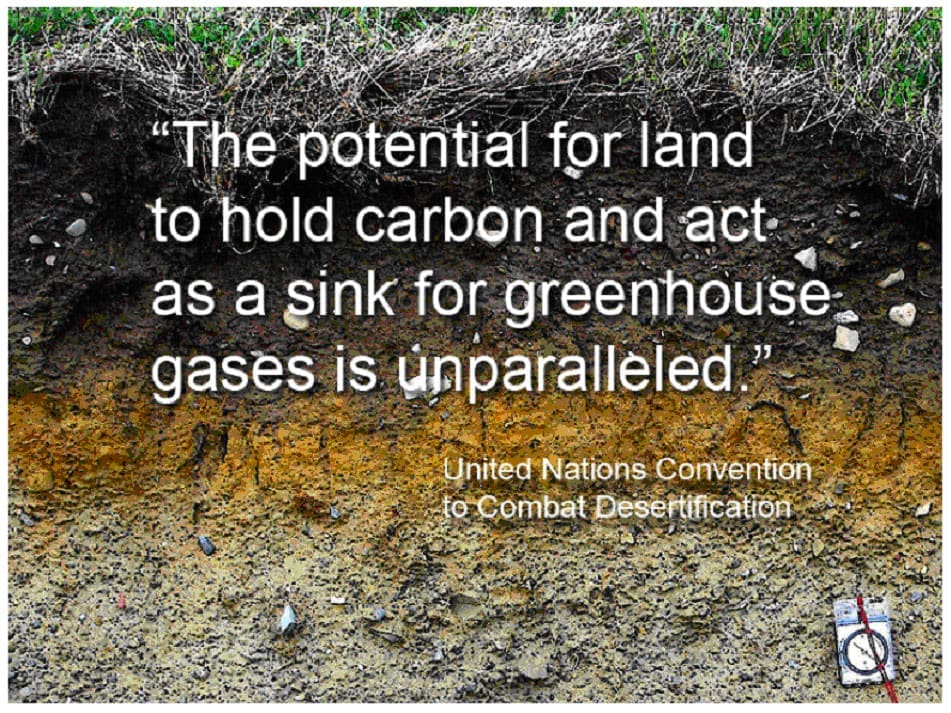
Our Boston conference has a roster of world-class experts followed by an international series of events bringing together climate advocates, farmers, ranchers, scientists, social scientists, policymakers, NGOs, artists, visionaries and the general public – in other words, any and all of us – for a non-technical discussion to consider:
- The exceptional potential of the biosphere to address all of our current emissions, as well as to remove the 125 parts per million of excess carbon dioxide from the atmosphere.
- Effective action on a global scale by applying eco-regenerative approaches to lands and waters worldwide.
- The use of biological systems to re-establish healthy water cycles to cool the earth’s surface.
Our primary urgent goal in the face of widespread breakdown in addressing climate change is to further the understanding necessary to embark on the global regeneration process made possible by enabling the forces of biology. Collectively we will present affordable strategies for eco-restoration that local, national and international governments, agencies, communities and individuals may rapidly implement in order to reverse global warming.
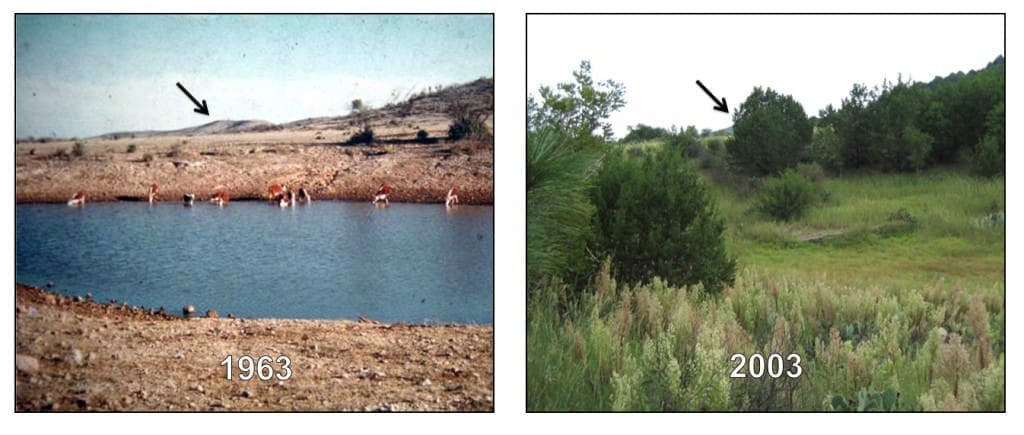
Background
As rising atmospheric carbon concentrations irrefutably demonstrate, the current climate conversation and ensuing policies have failed us. It is clear at this point in time that emissions reductions, while necessary, are insufficient to address the destructive climate processes that are already under way. We need safe, low-tech, inexpensive and viable solutions.
Hope
There is a way, which has yet to take its rightful place at the heart of the climate debate: the capacity of the natural world to actively remove carbon dioxide from the atmosphere and store it in soils worldwide.
The biosphere is a powerful geological force. While it is not yet widely understood, the life force has been terraforming the earth for the past 3.5 billion years, from vast rock formations to an oxygen atmosphere to soils and weather and everything in-between. Forces of living systems, managed for healthy biodiversity and natural cycles, will capture prodigious amounts of carbon dioxide. If we set up favorable conditions, nature will store greenhouse gases in complex and stable biomolecules in soils, the largest terrestrial carbon sink on the planet, as it has done for eons.
We already have the knowledge and experience to move ahead confidently with all due haste. Scientists and practitioners of eco-restoration have decades of experience, repeatedly having demonstrated dramatic successes in bringing dying lands back to life in only a few years, regenerating ecosystems such as dry grasslands, humid jungles, and temperate forests.
To accomplish this on a global scale would not only address a rapidly deteriorating climate, but restore flourishing habitats for the millions of species that we depend upon across the world, and bring untold benefits, including food production and economic security, to people everywhere. Best of all, it is low-tech and low-cost – and when given a chance, the biodiverse life in the world’s soils will do 99% of the work.
We invite sponsorship and partnership from individuals and organizations, which may include support for conference organizing, publicity, administrative support, venue, and operating costs.
For further background information, please see our Resources page, and for inquiries, please contact climate2014@bio4climate.org
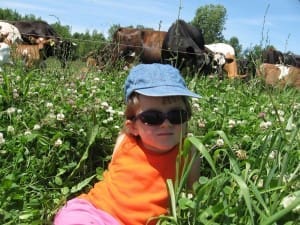
Hope for a Livable Climate
6:00 – 9:00 p.m.
Hope for a Livable Climate: The Promise of Restorative Grazing & Other Ecological Innovations to Regenerate Soil, Secure Food & Water, Revive Rural Economies and Reverse Global Warming


